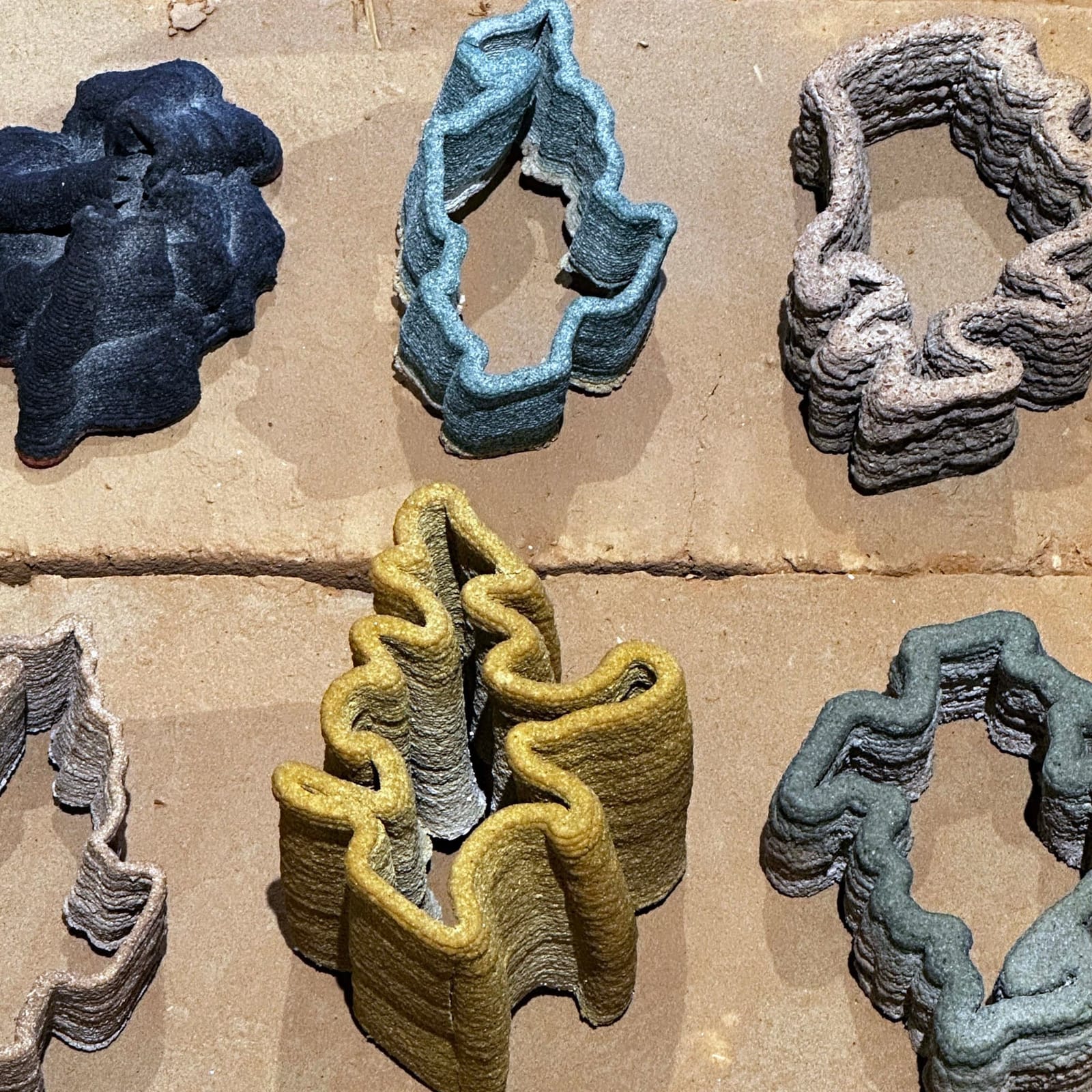Soil, Toil & Table, a recent exhibition at the Lethaby Gallery at Central Saint Martins, radically reimagined our connection to the land. Created by students, staff, and alumni, the exhibition dug into food systems – from soil to supermarket – exploring cultivation, culture, and waste.
The exhibition was a call to action and reminded visitors that "there are no shortcuts in the soil". The 70 works by artists and designers challenged viewers – and asked them to question their food choices and ecological systems – as cities grow and agricultural soil degrades at alarming rates.
London-based Trend Forecaster and Contributor to THE KINDCRAFT, Fiona Coleman walked the exhibition and noted projects that balanced heritage and innovation in interesting ways.
Cultivation
At the heart of our food system lies the soil. A generous resource that, if sewn, watered and tended to, can bring forth life's very fuel. Holding stories and memories, an impressive nutrient composition and the resilience to adapt to environmental damage, there is little our land cannot overcome.
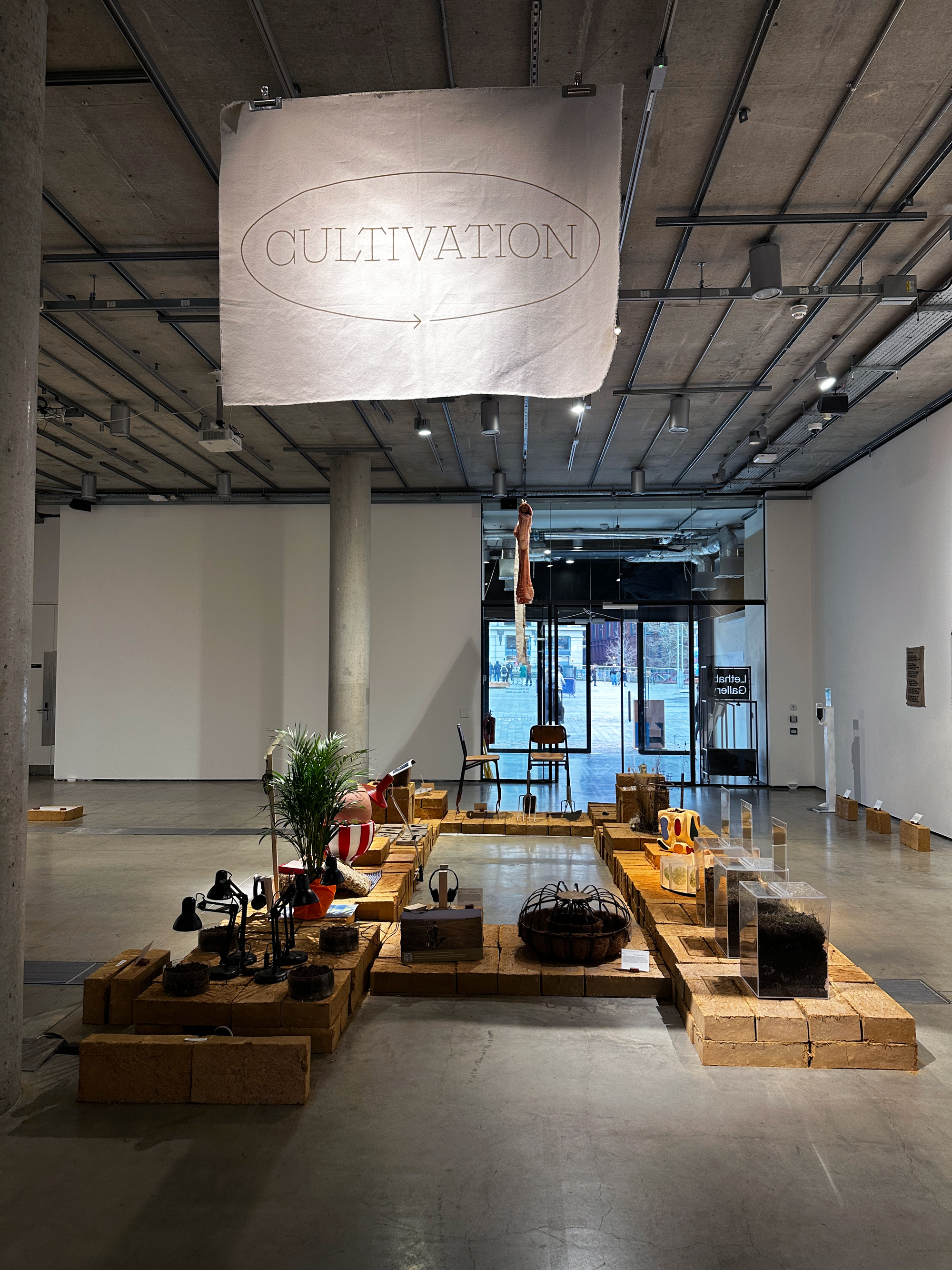
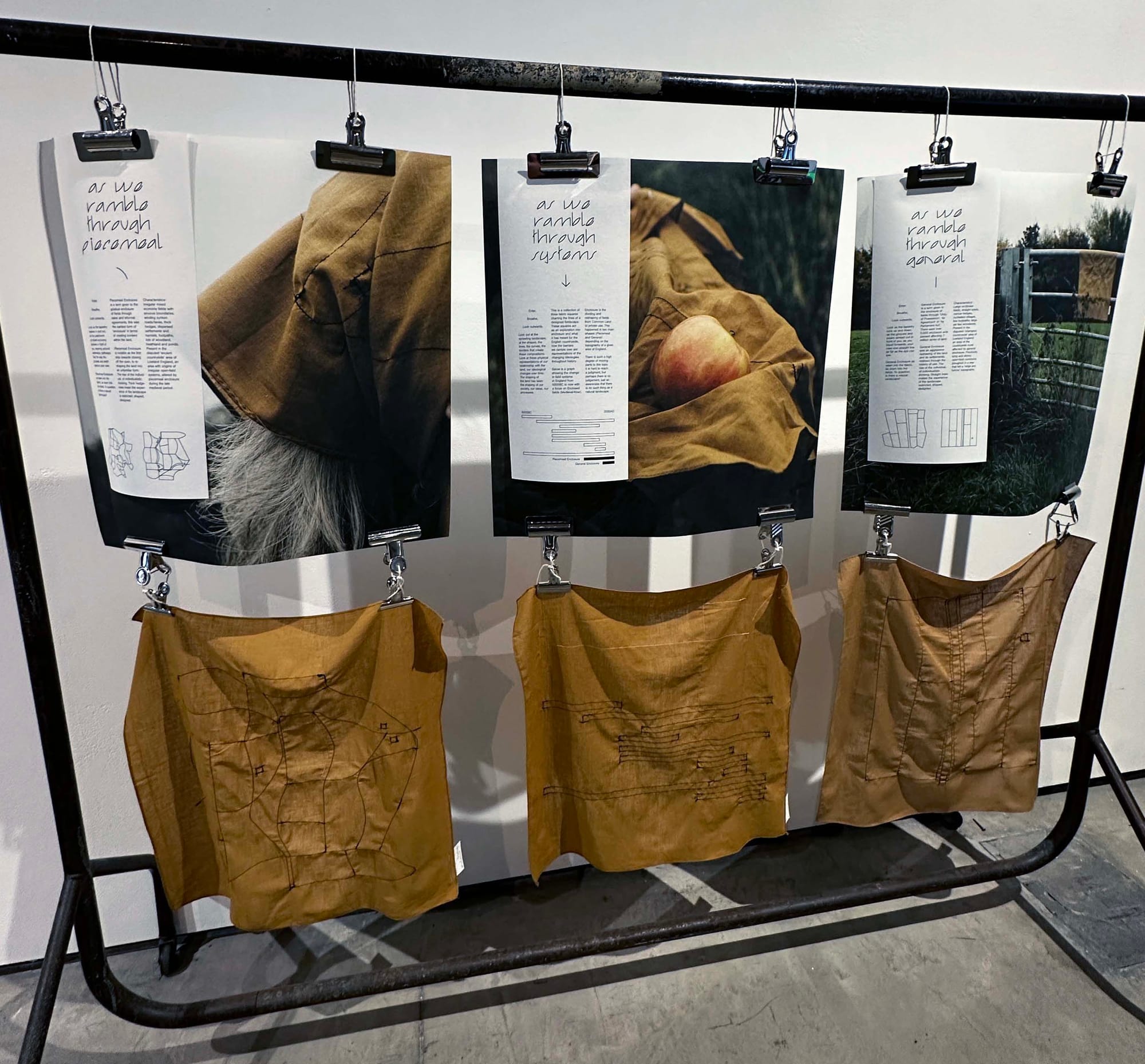
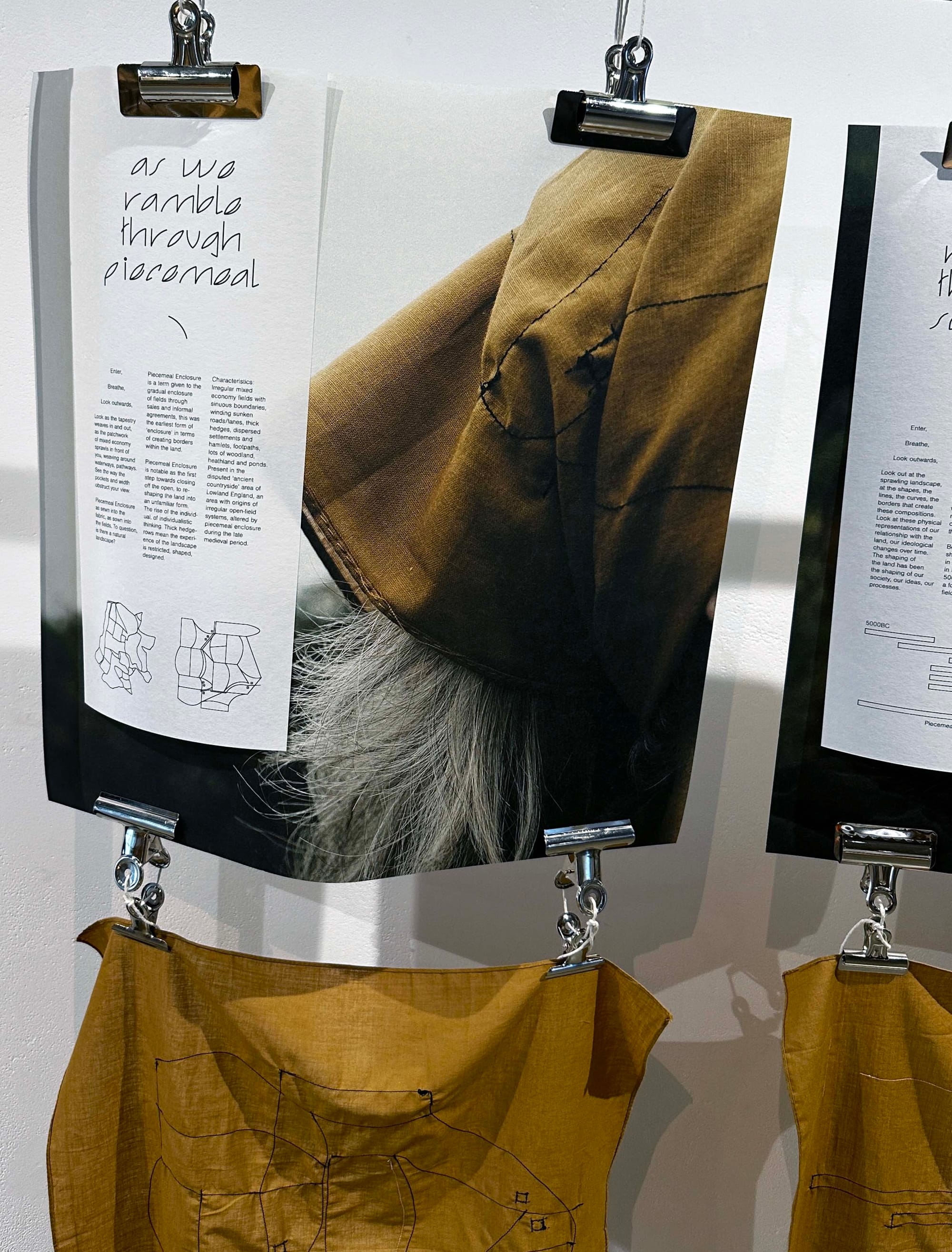
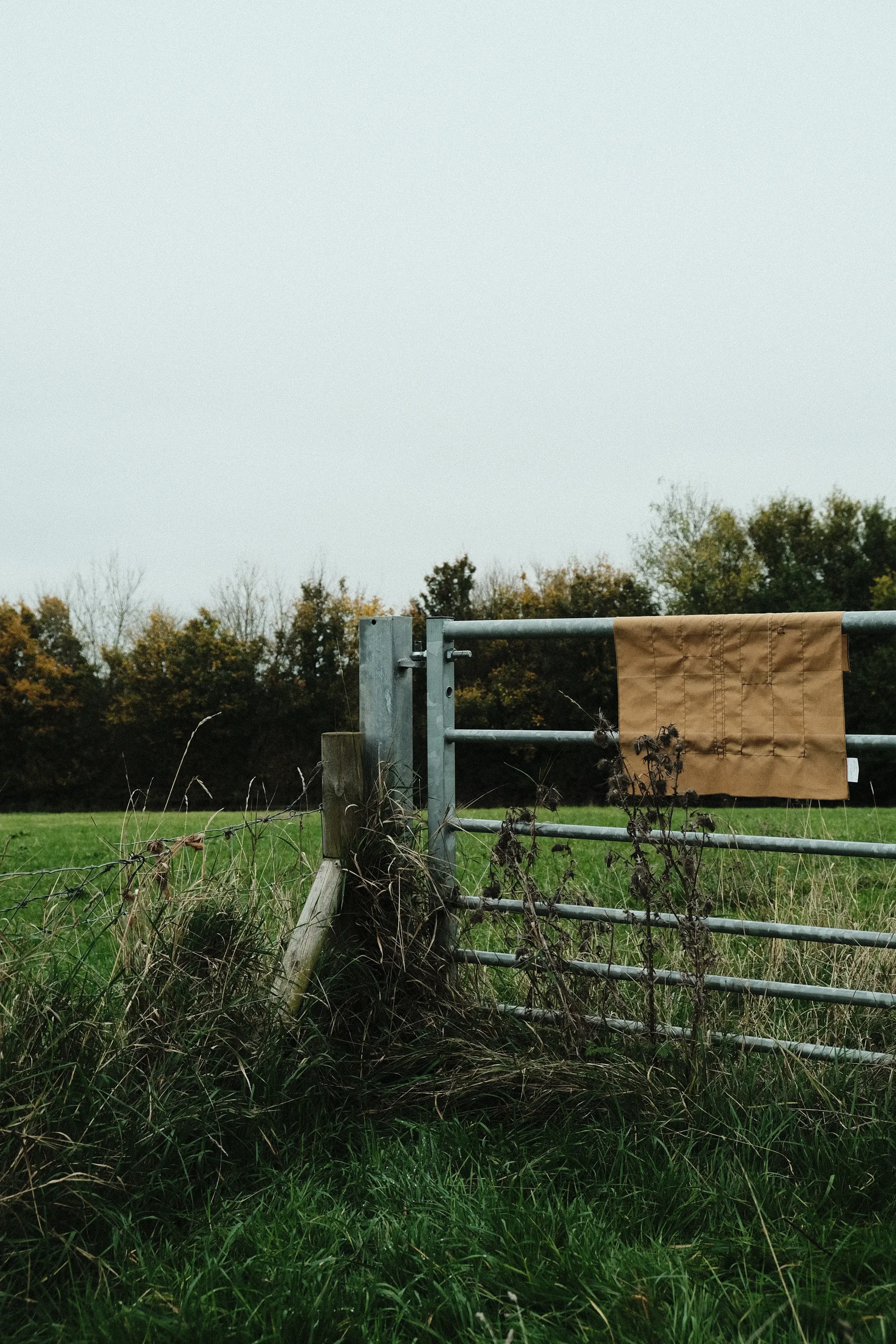
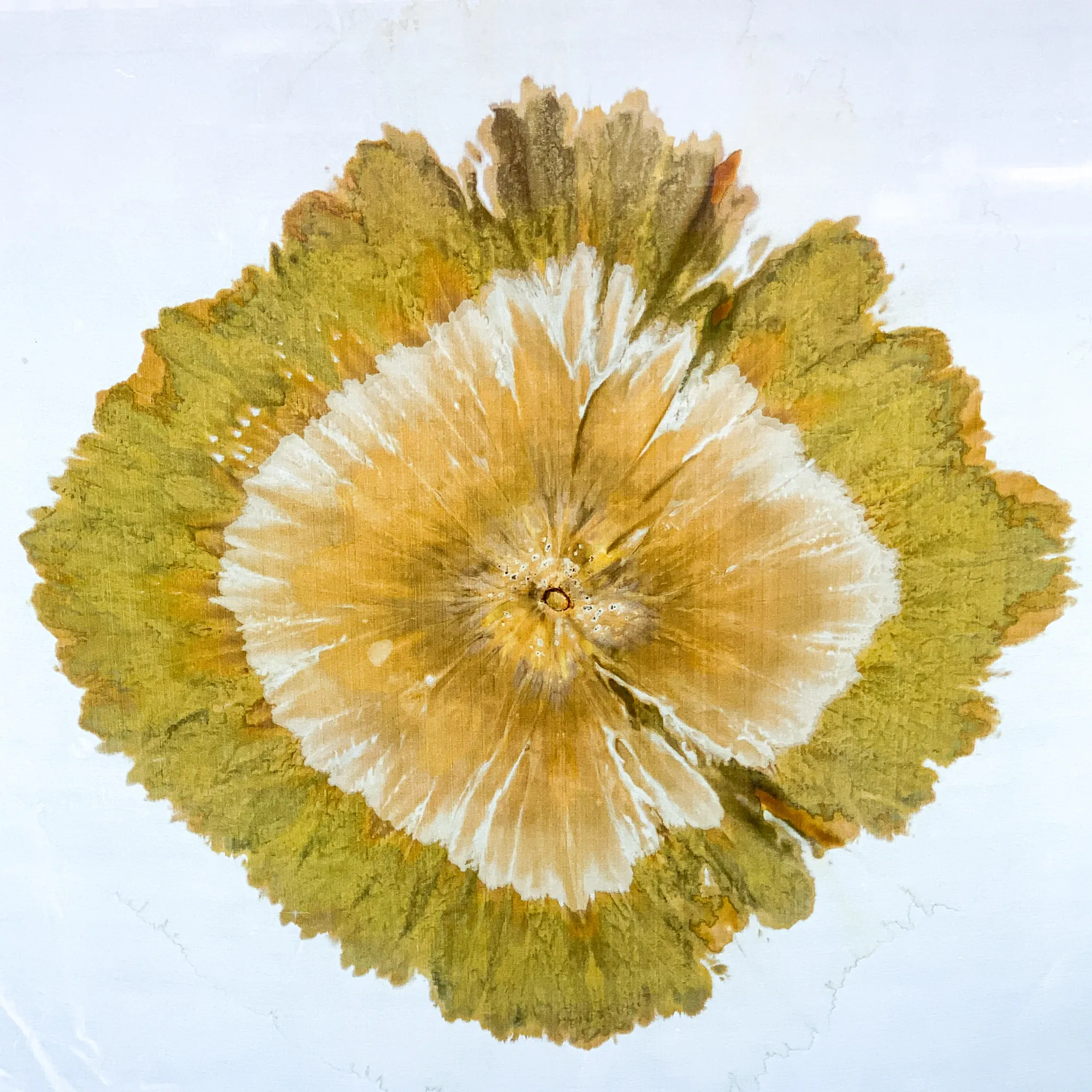
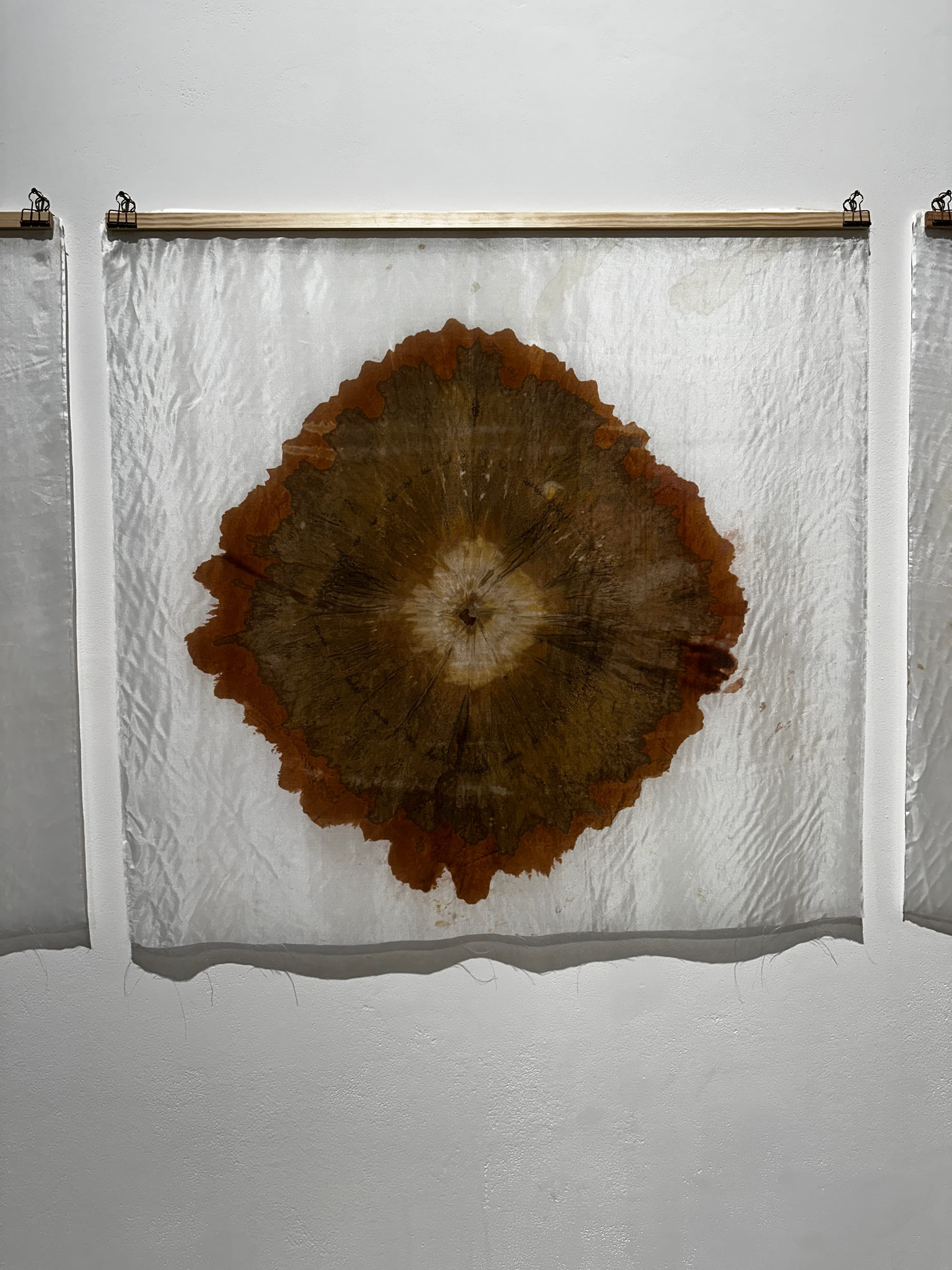
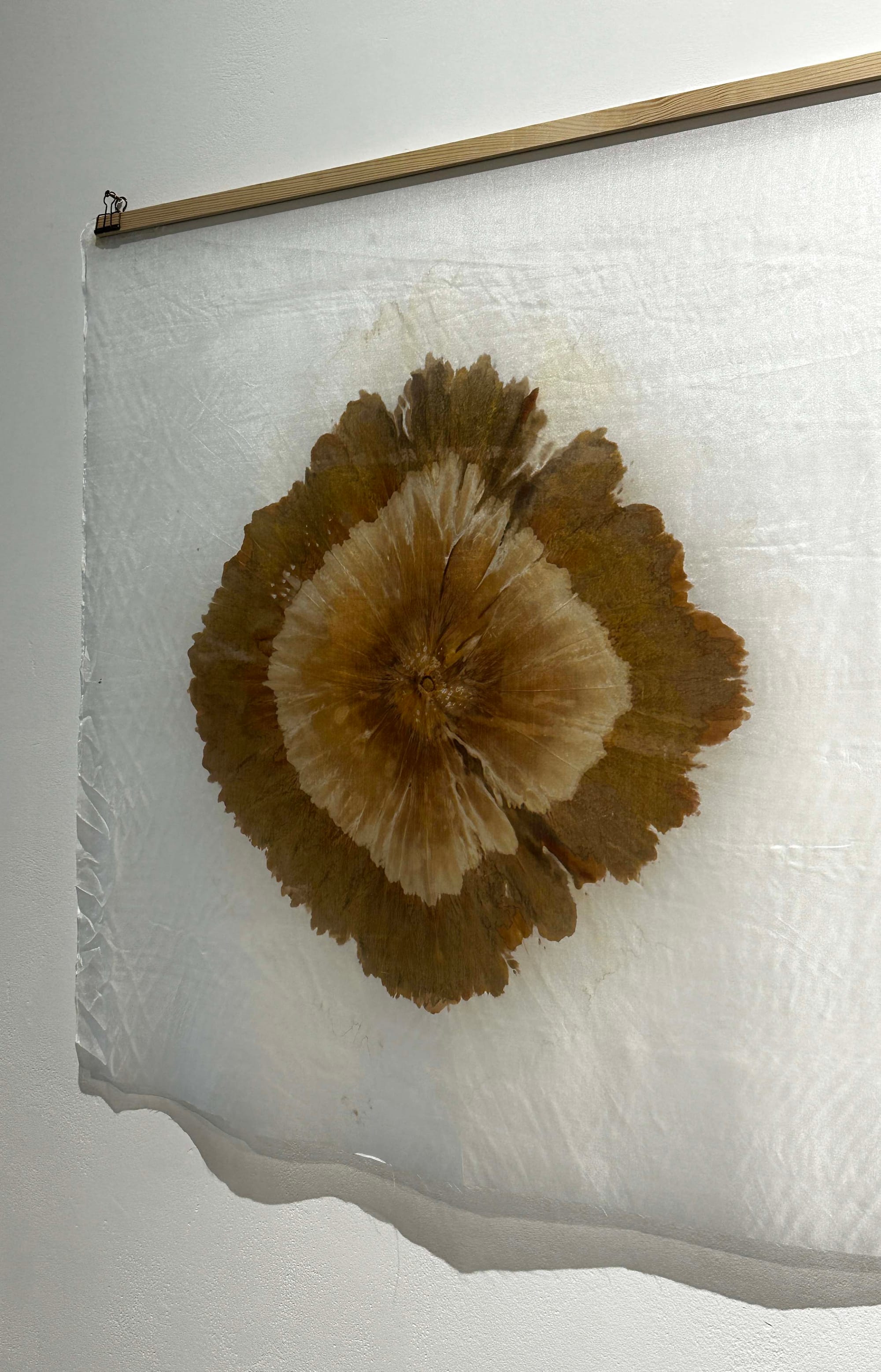
Marcus Kerr 'Rambling Through Enclosure' 'Rambling Through Enclosure' attempts to make sense of the systems and impact of enclosure on agricultural land in England, from late Medieval times to now, using textile and type design to explore the changing forms and characteristics of the fieldscape. Prompting awareness of enclosure and how the land we ramble through is not as natural as it may seem, Marcus presents stories of ideological changes throughout history. Molly Macleod 'Loam' Multidisciplinary artist Molly's poetic, collaborative projects with researchers examine scientific concepts through philosophical engagement. 'Loam' depicts a breakdown of our soil's chemical makeup through the process of chromatography, inviting us to compare the intricacies between the soil that supports industry and the soil we have left relatively untouched. Soil samples were taken from three dominant types of land that make up the British landscape, then chemically digested, soaked into silk and exposed to sunlight; revealing a readable depiction of our soil's composition. Photos: Fiona Coleman, Marcus Kerr, and Molly Macleod. Text: Soil, Toil & Table
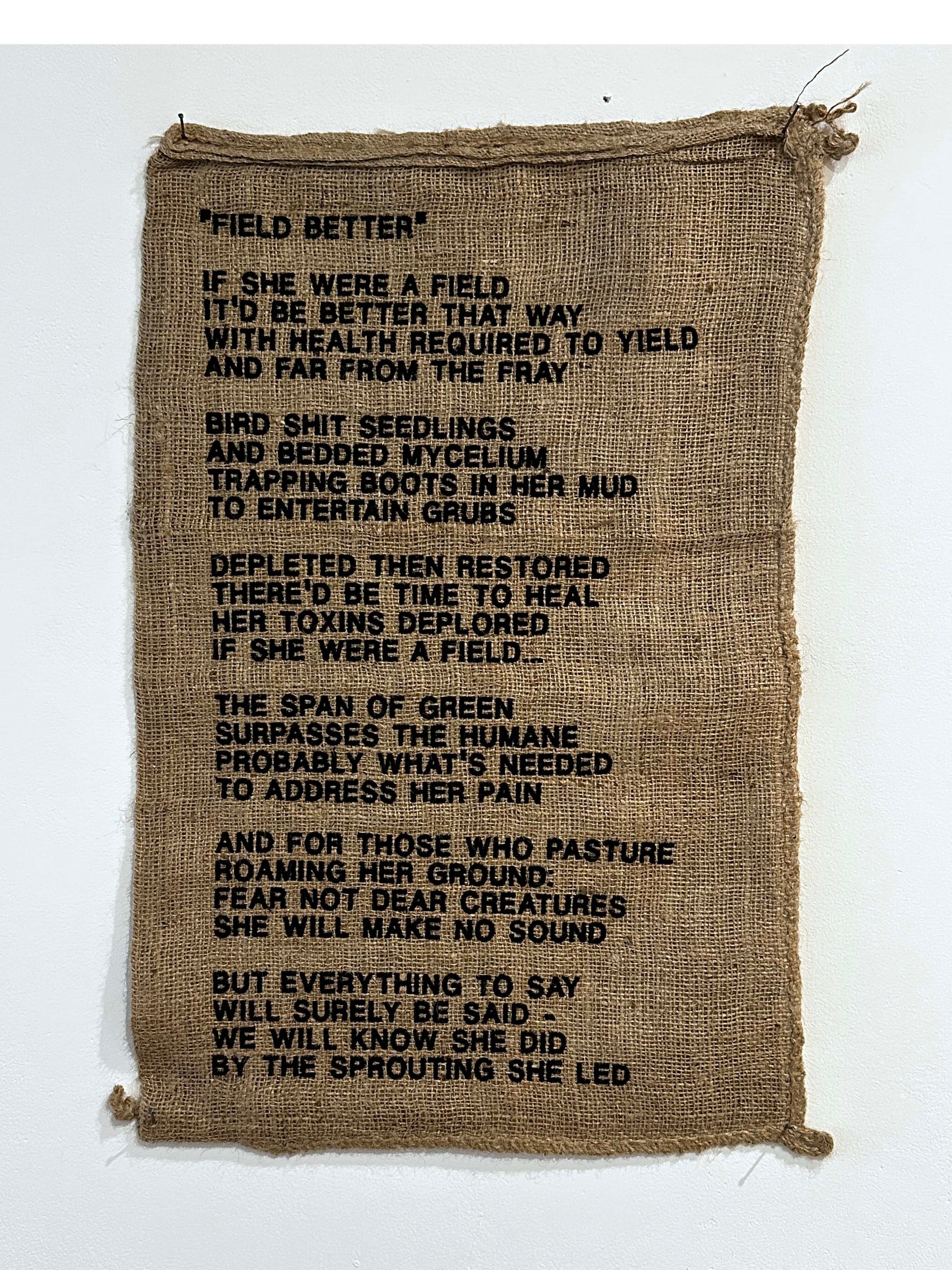
Culture
Life on earth changed when we decided to settle, localise agriculture and form communities around it. From this point onwards, we have created meaning through gathering and designing, exchanging ideas, values and behaviors and growing a society worth reflecting upon.
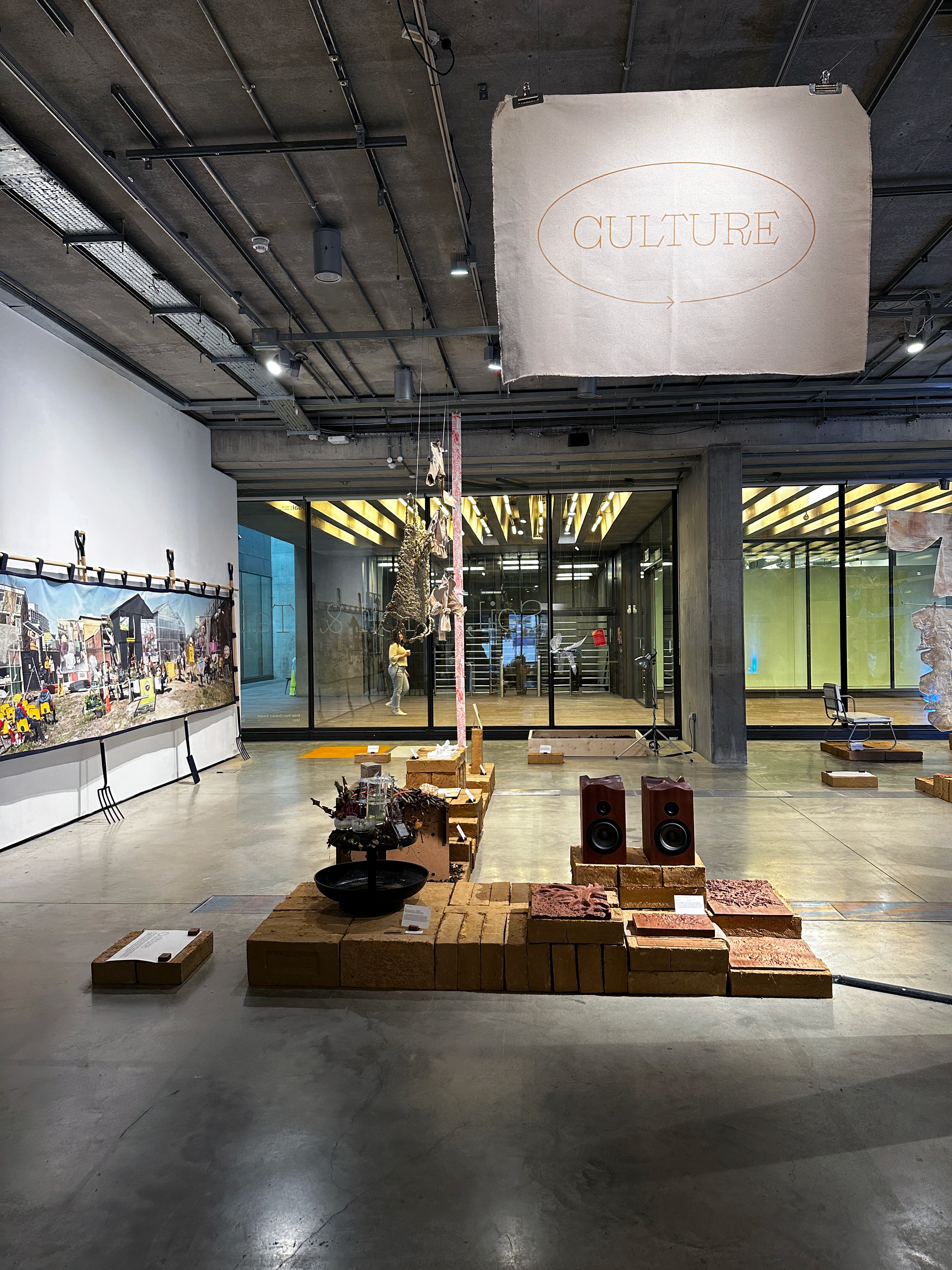
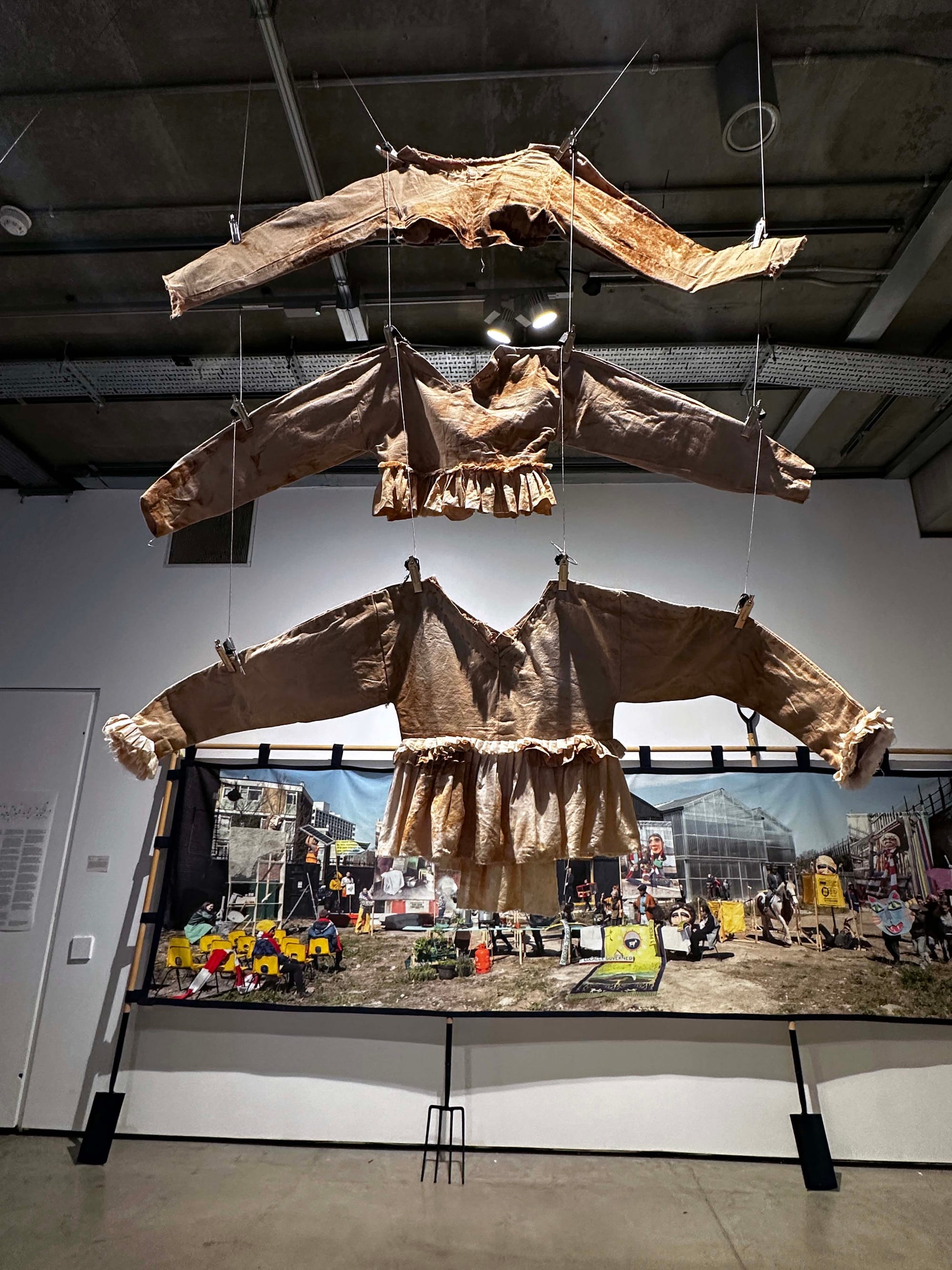
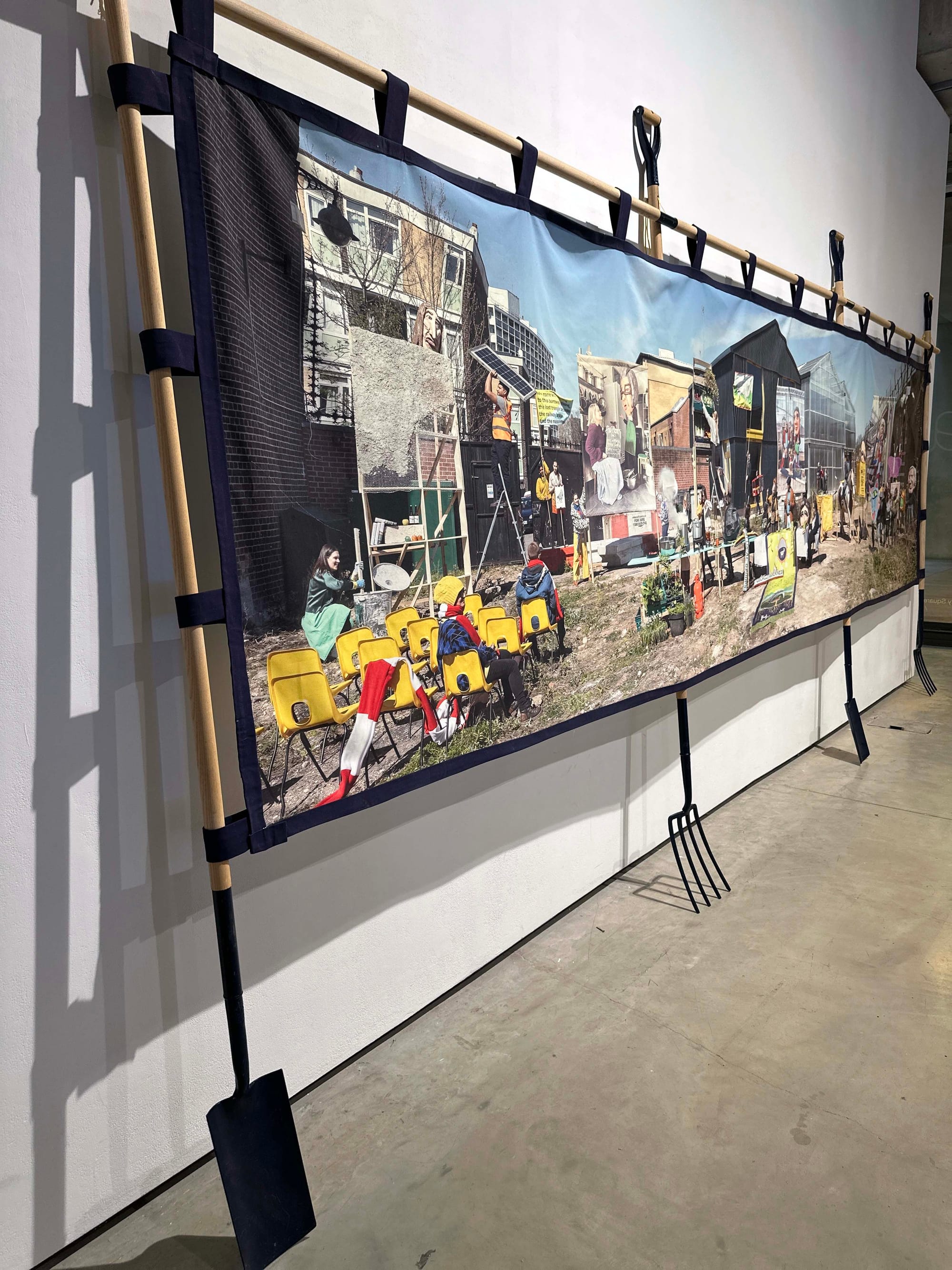
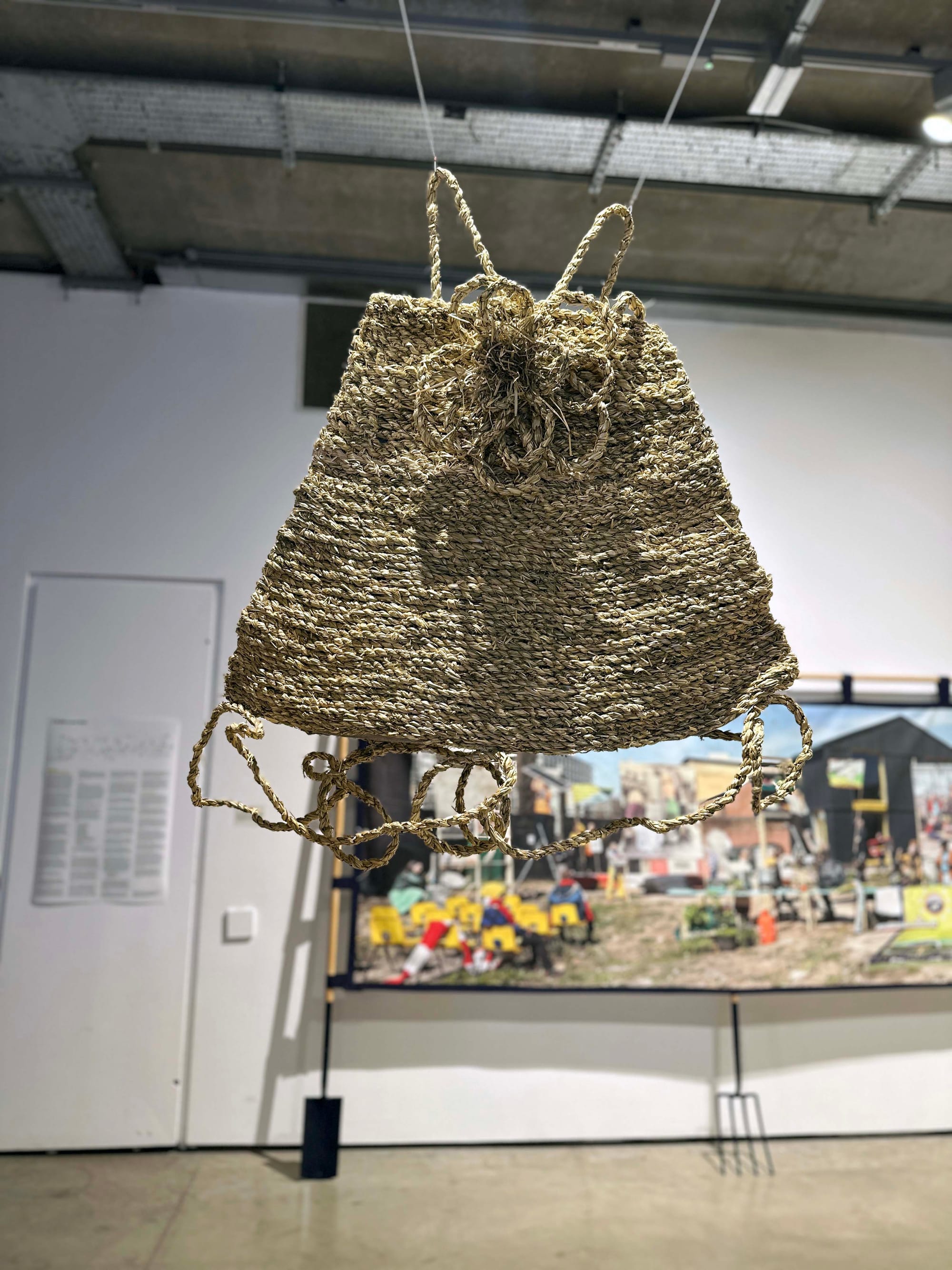
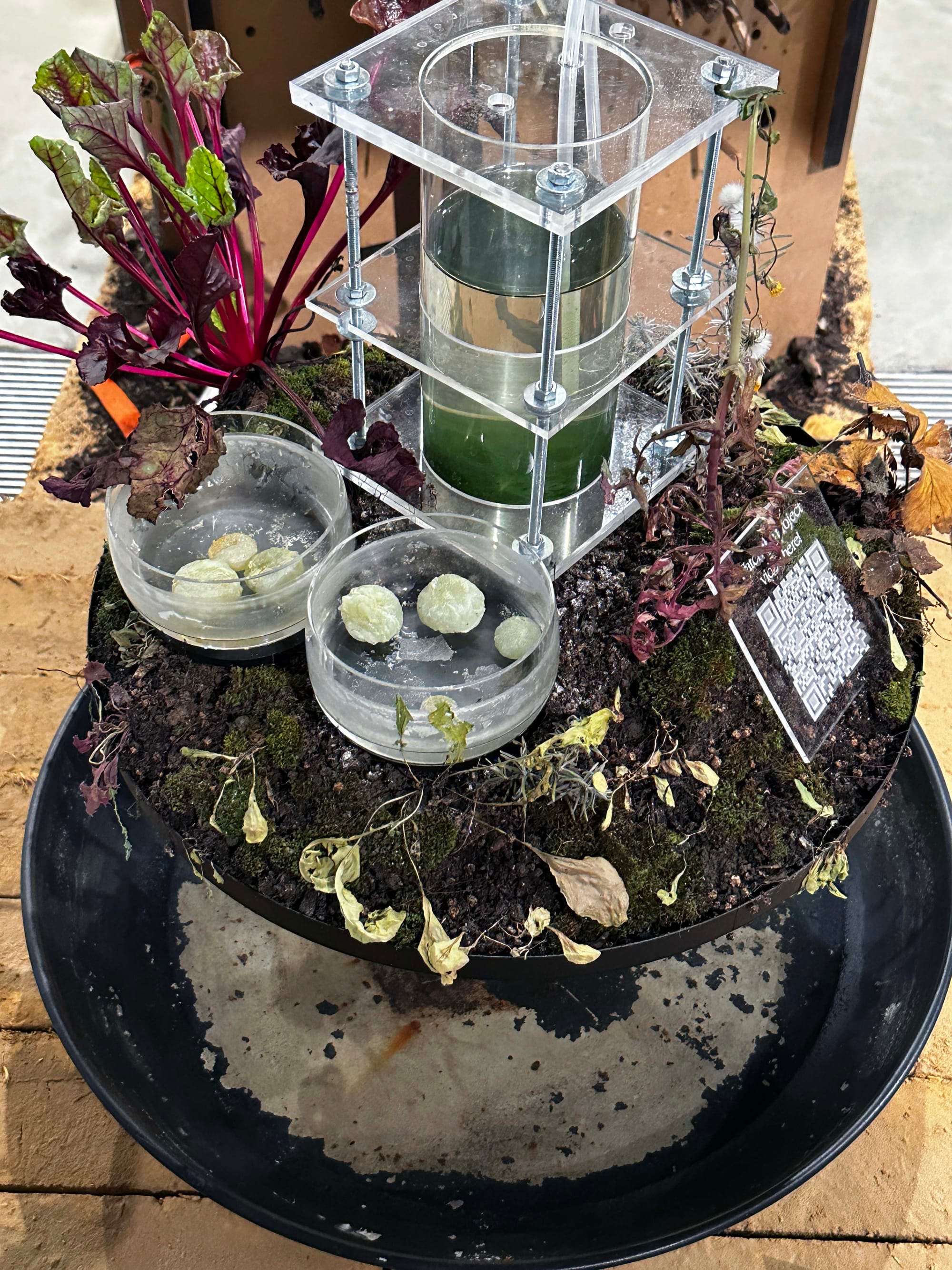
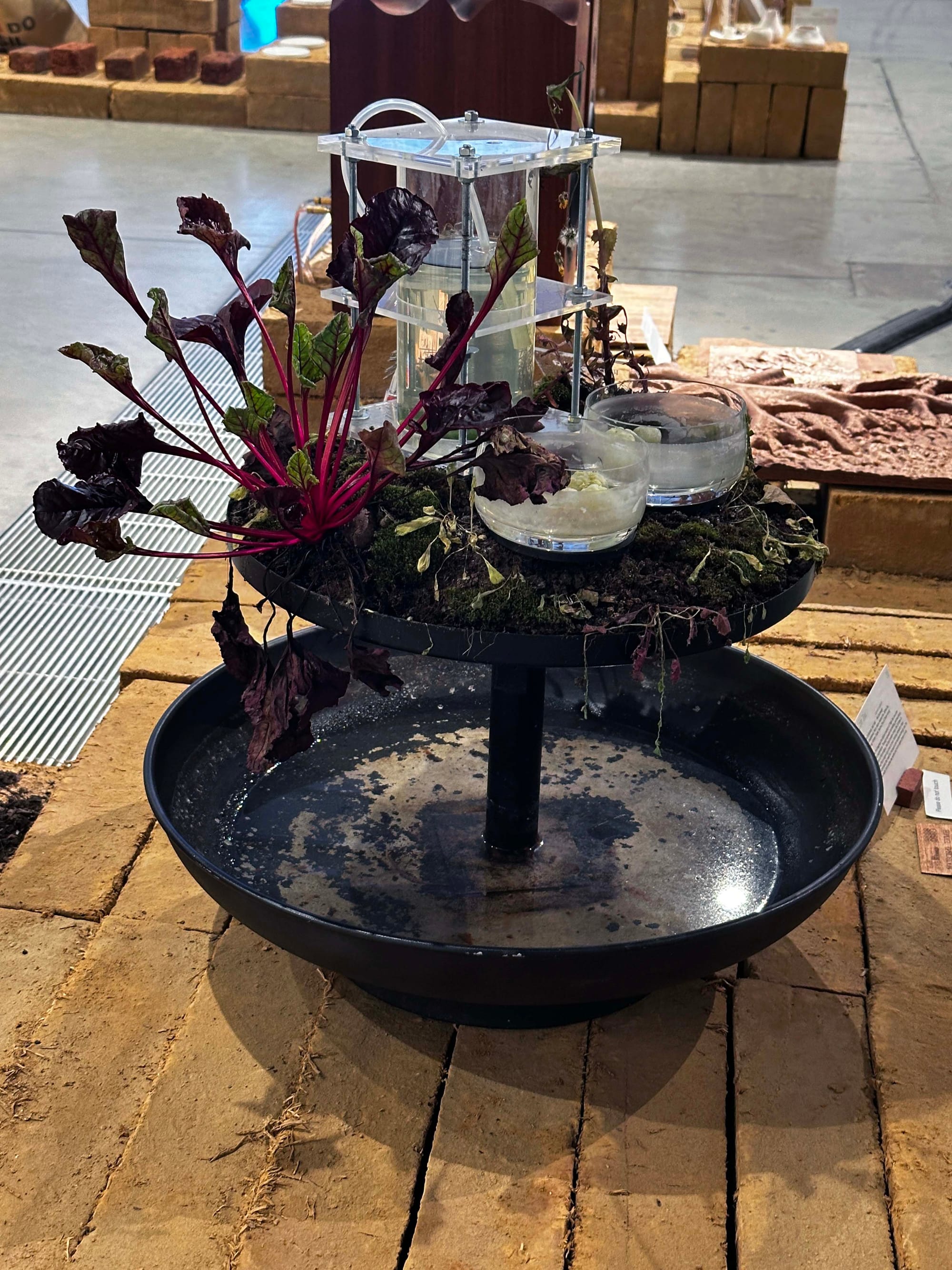
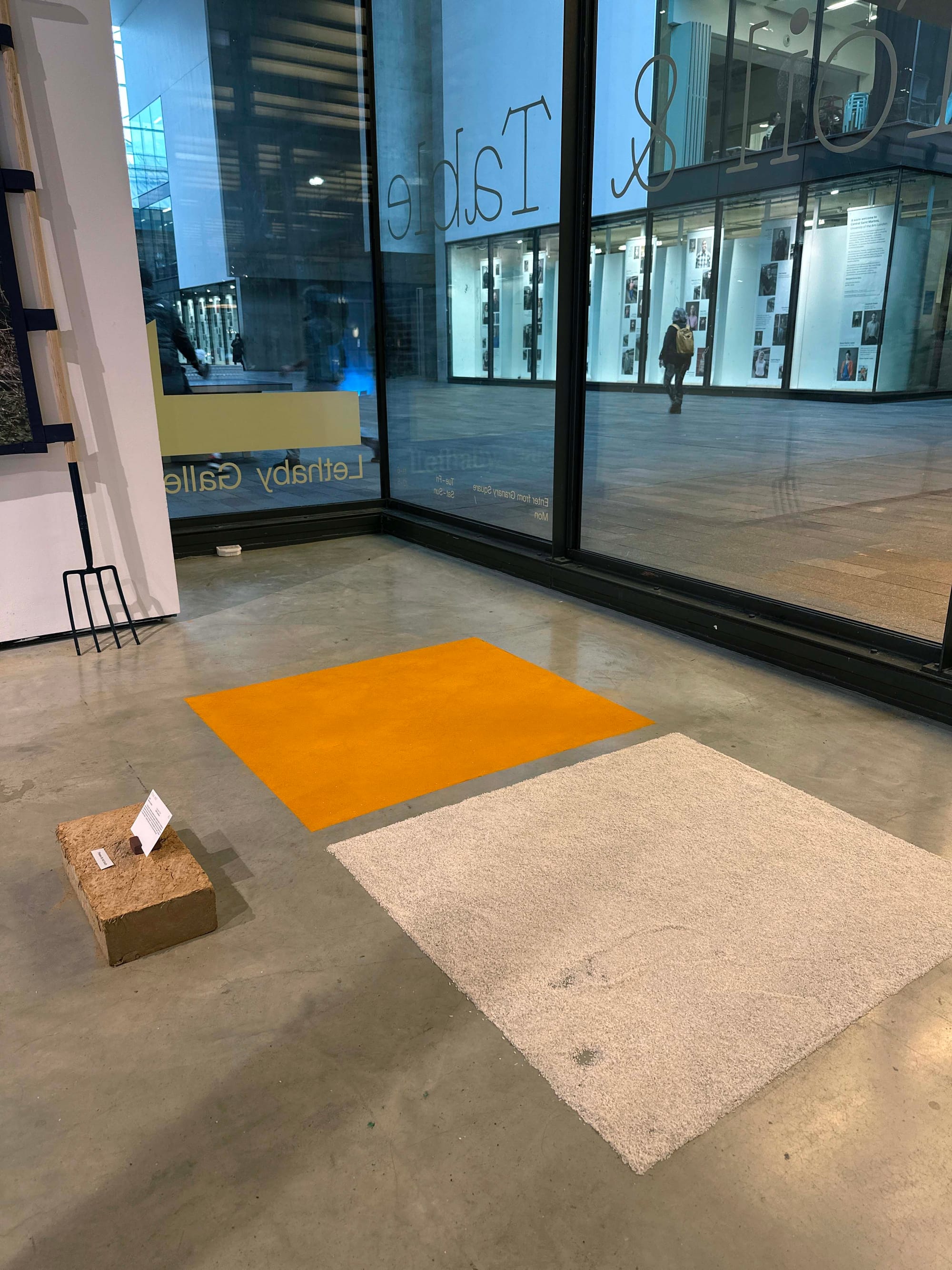
Public Works 'The Public Land Grab' Public Works is non-profit critical design practice operating at the intersection of architecture, art, and performance. 'PUBLIC LAND GRAB' at LJ Works is a pilot project exploring how citizens and architects can claim land for long-term public use, by establishing community-governed, self-sustaining economies to safeguard public assets in urban spaces. Adam Faurschou 'Harvest' Adam Faurschou is a fashion designer commited to designing clothes that challenge the linear model of consumption today. For his 2024 graduate collection, Adam found inspiration in the close links between the culinary and agricultural world, fashioning clothes that reconnect the consumer with our collective, and often finite, resources. Lorenza Di Battista, Akir Hall, Radhika Khandelwal, Harry Mann, Haoran Niu, Sylvie Qiu, Yixuan Song, Kirsten Tingle, Rachel Zhou & Shijia Huang 'Low Tea' 'Low Tea' re-imagines the British tradition of 'High Tea' as a low-resource food experience. Through rainwater harvesting, permaculture, and cultivation of micro-algae, this food system brings the 30 litres of water required for a single cup of tea to zero. Pointing towards a food future that eliminates the need for transport and excessive energy use, the full menu is made from native tea herbs and micro-algae grown in situ. Vaishnavi Sathish 'Altar Self' In 'Altar Self', Vaishnavi explores the foundational pillars of civilisation, food and ritual, and how they evolve together. Extending the dichotomies between concepts such as routine and ritual, the divine and the dead into a more tactile expression, her phrase, "Two Rectangles as the Self," touches on human doubt - whether there can ever truly be one whole Self. Photos: Fiona Coleman. Text: Soil, Toil & Table
Renewal
In times of crisis, we have a responsibility to renew. To look and act with care, finding community, solace and wellbeing in what the land gives us and what we can give in return.
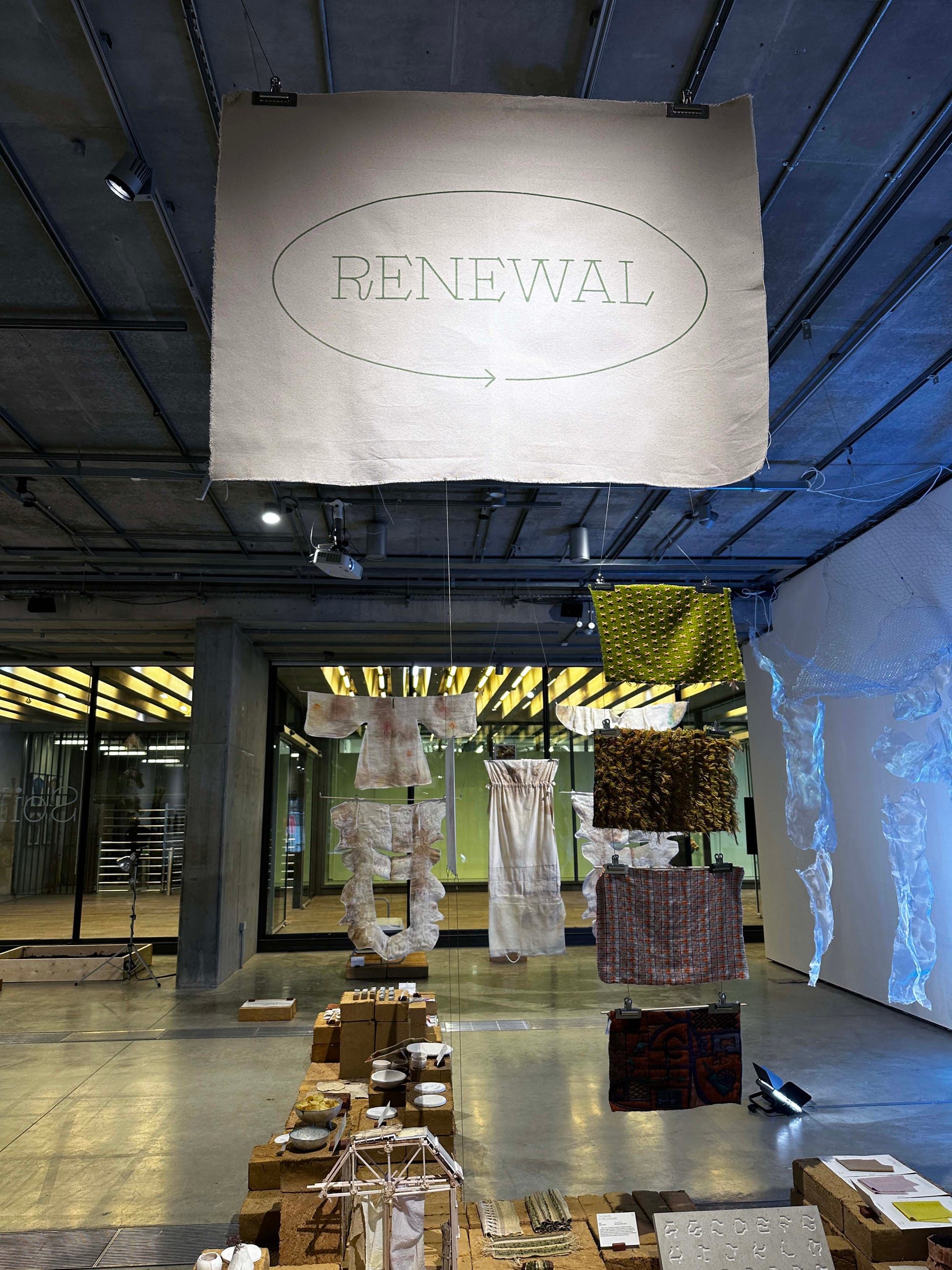
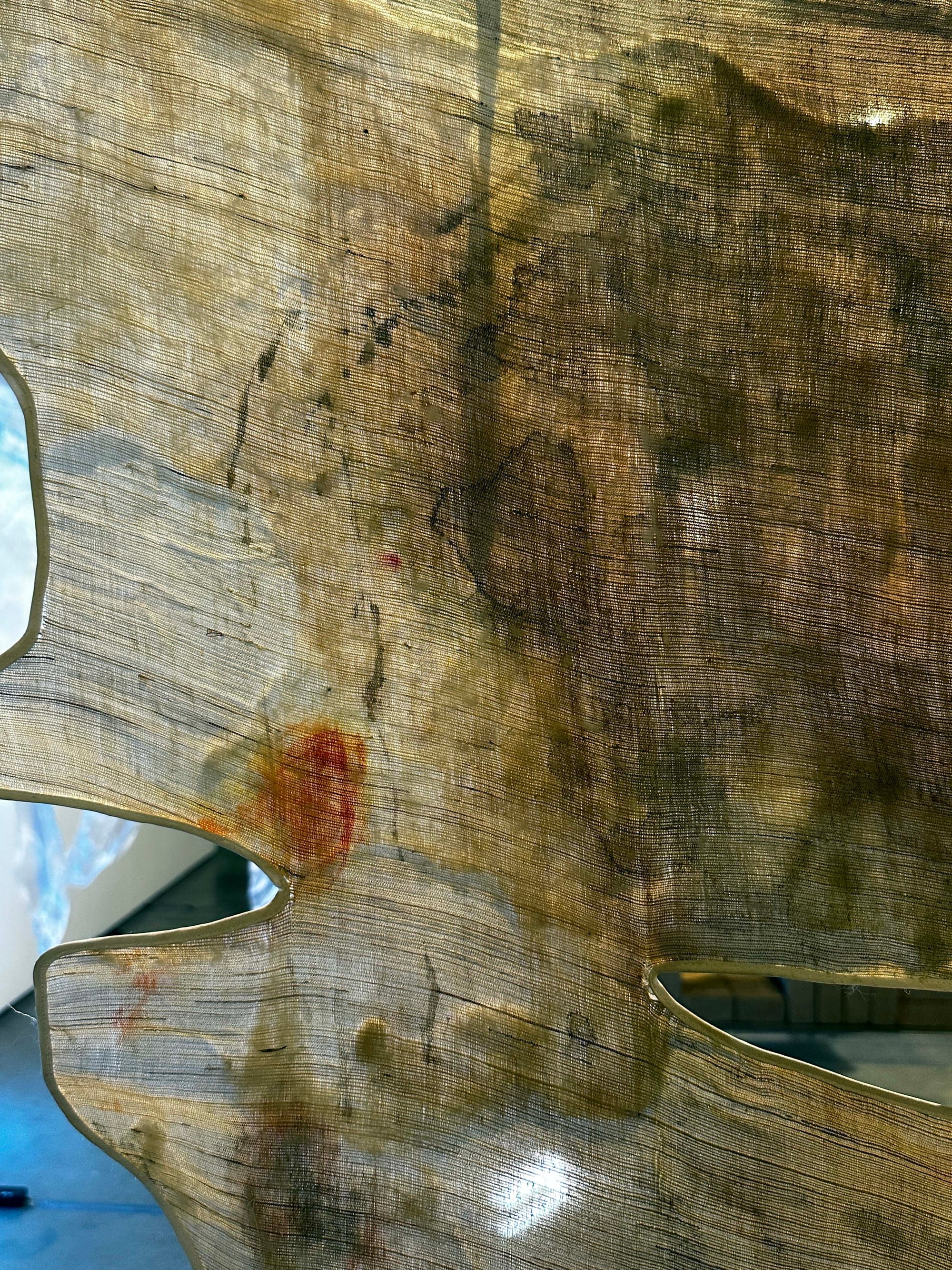
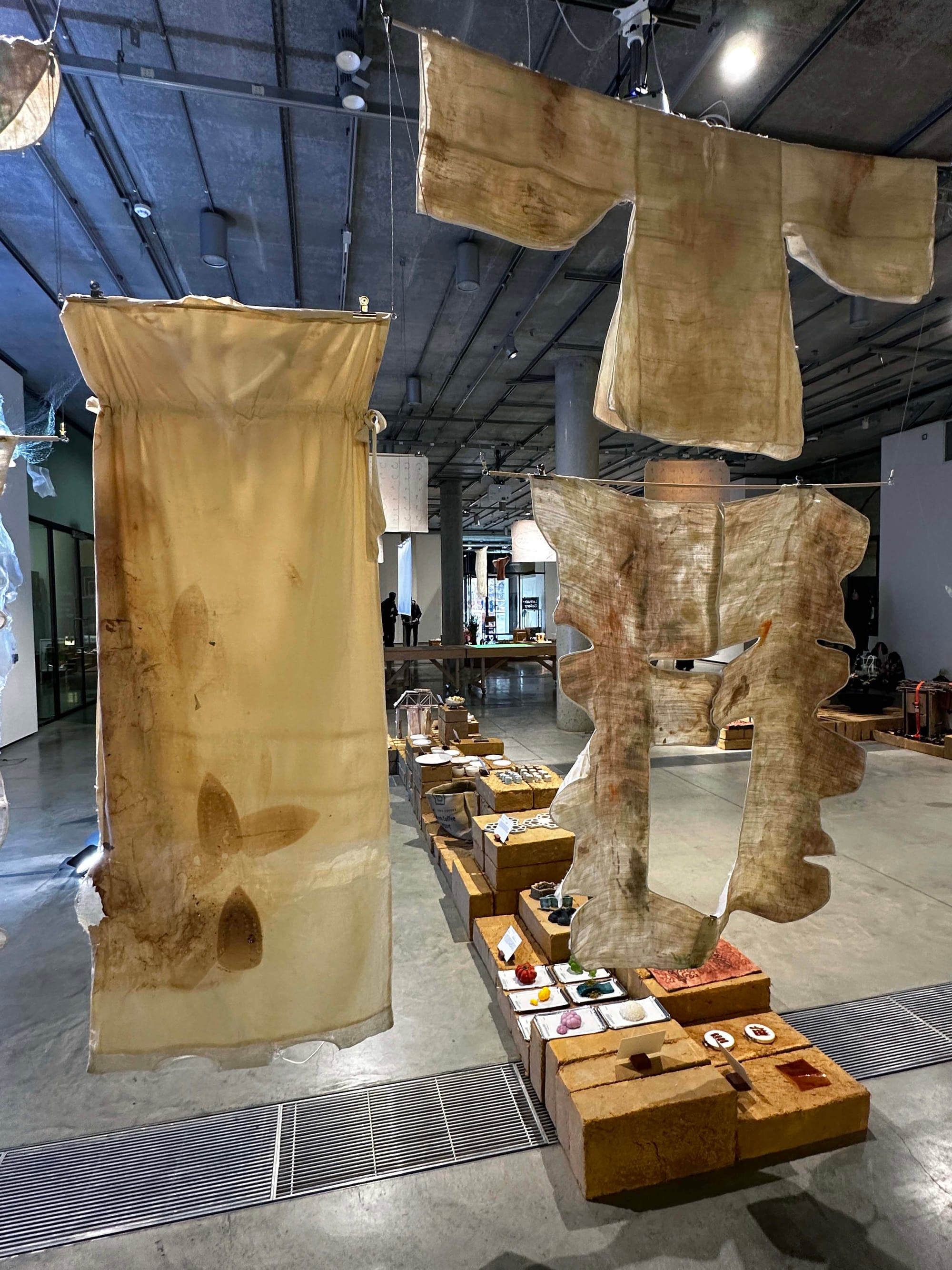
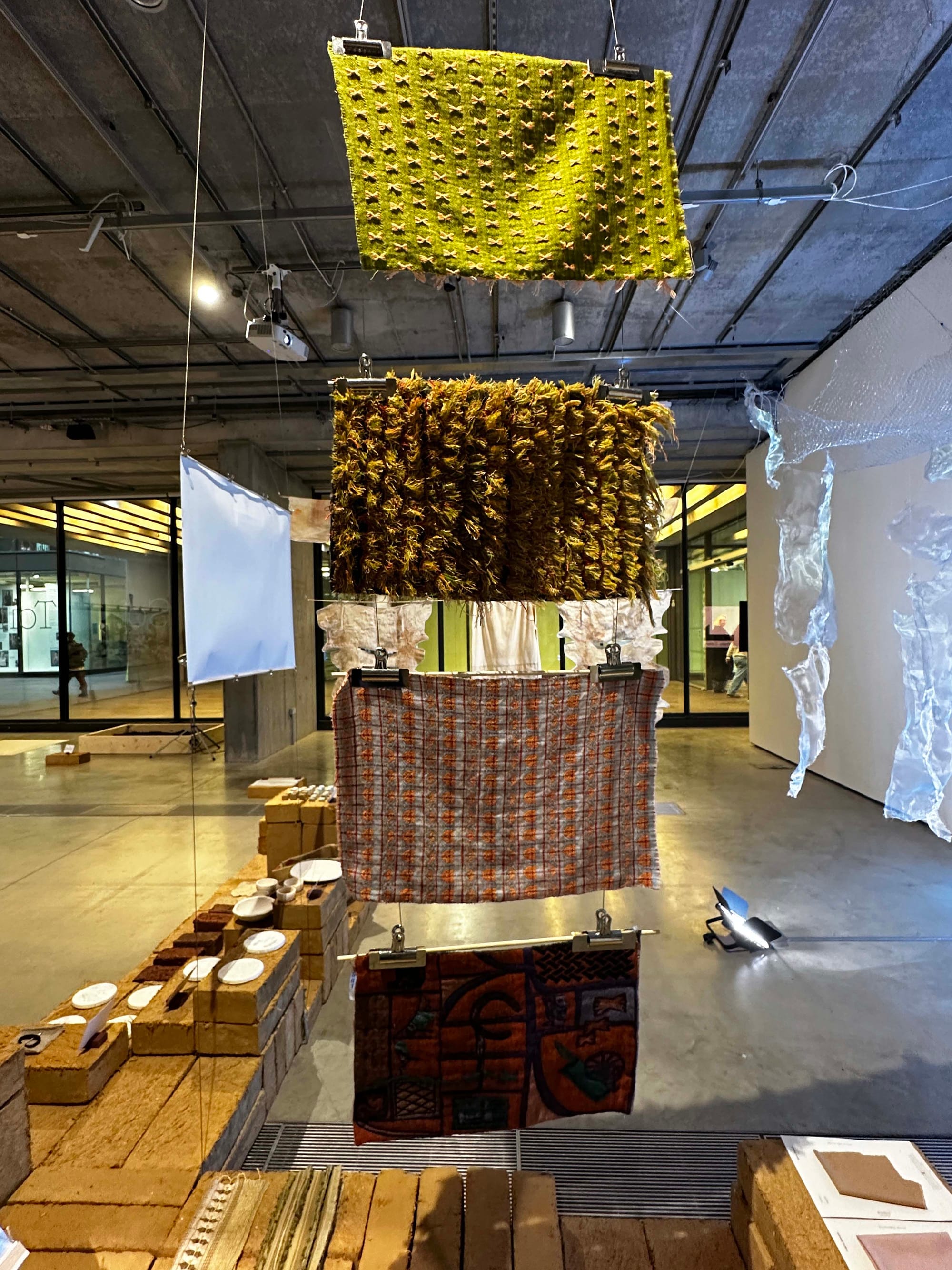
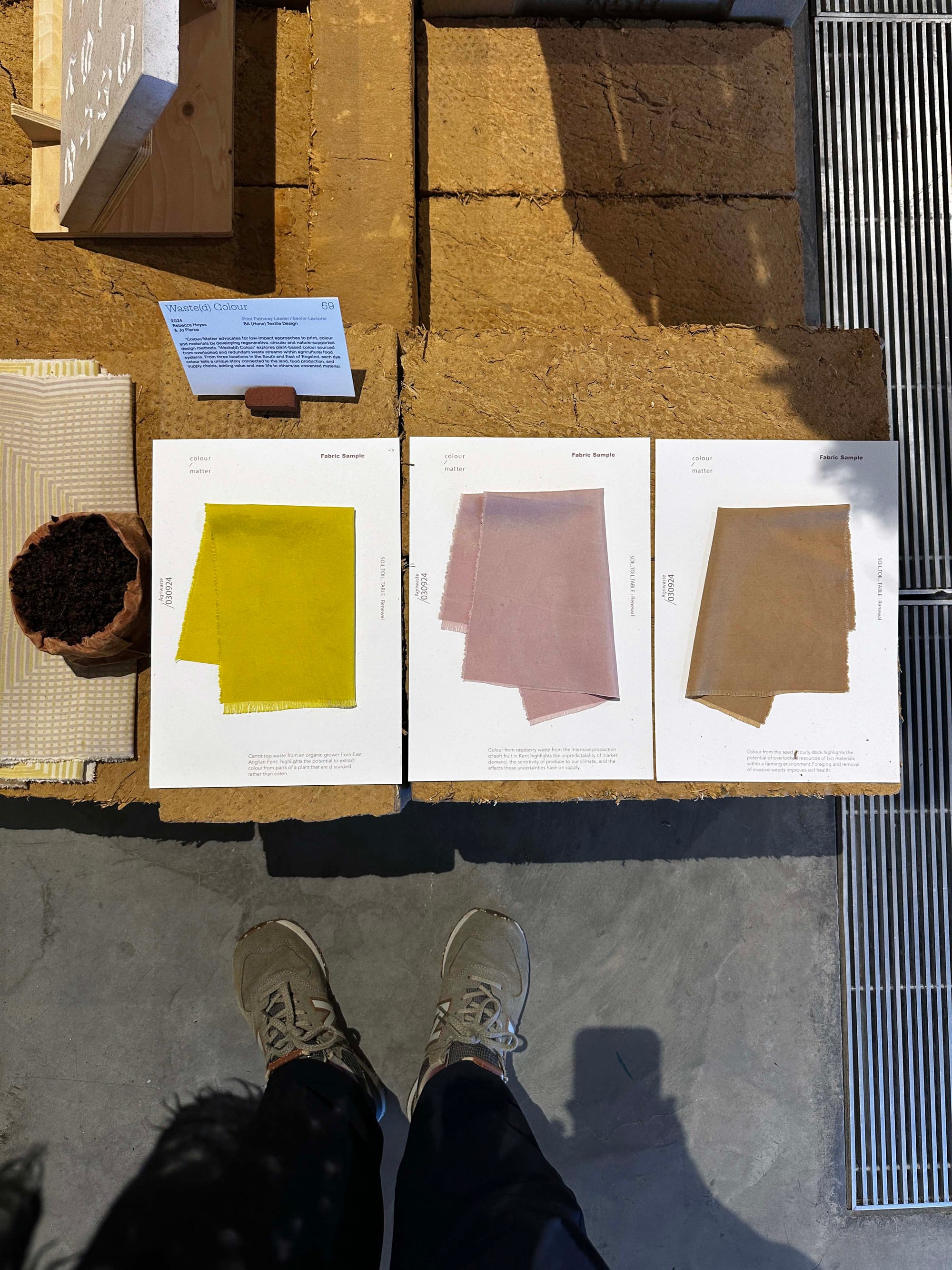
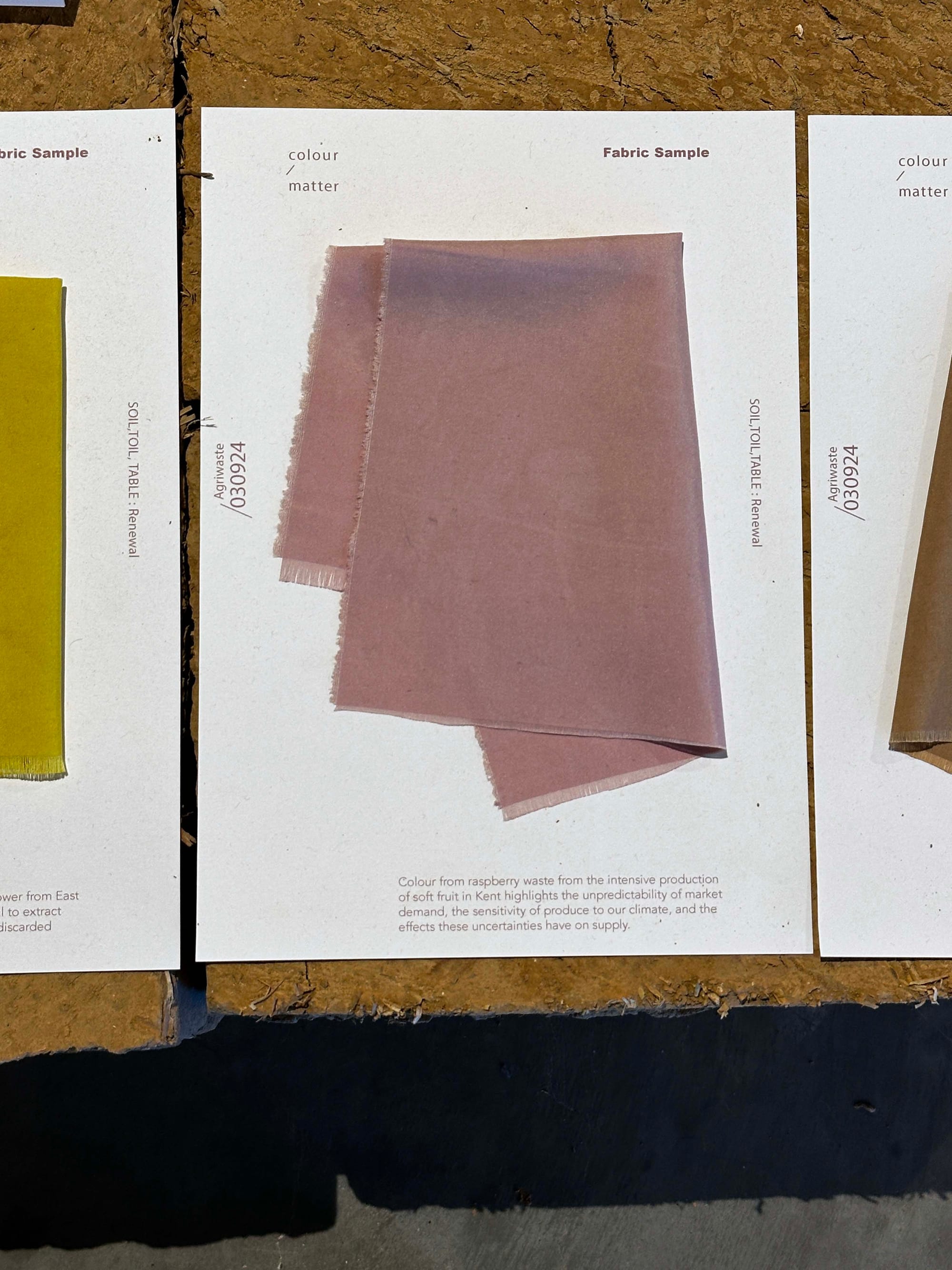
Yilin Du 'Fluidirty' Ancient textiles, such as ramie, and natural dyes derived from kitchen waste are used to create garments that reflect and coexist with nature and honour cultural heritage. Yilin considers waste to be a valuable resource. 'Fluidirty' fosters renewal principles while reconnecting with traditional craftsmanship. Megan Pettey 'The Islands to The Lowlands' With a focus on traditional handcrafts in conjunction with slow production, Megan's handwoven menswear collection is an exploration of British rural life, celebrating the local farming and craft industries that have supported working-class people for centuries. Megan's fabrics, including British wool and recycled wool from a British mill, are created by developing offcuts into recycled felt embroidered patches. (Bottom) Rebecca Hoyes and Jo Pierce 'Waste(d) Colour' 'Colour/Matter advocates for low-impact approaches to print, colour and materials by developing regenerative, circular and nature-supported design methods. 'Wasted) Colour' explores plant-based colour sourced from overlooked and redundant waste streams within agricultural food systems. From three locations in the South and East of England, each dye colour tells a unique story connected to the land, food production, and supply chains, adding value and new life to otherwise unwanted. Photos: Fiona Coleman. Text: Soil, Toil & Table
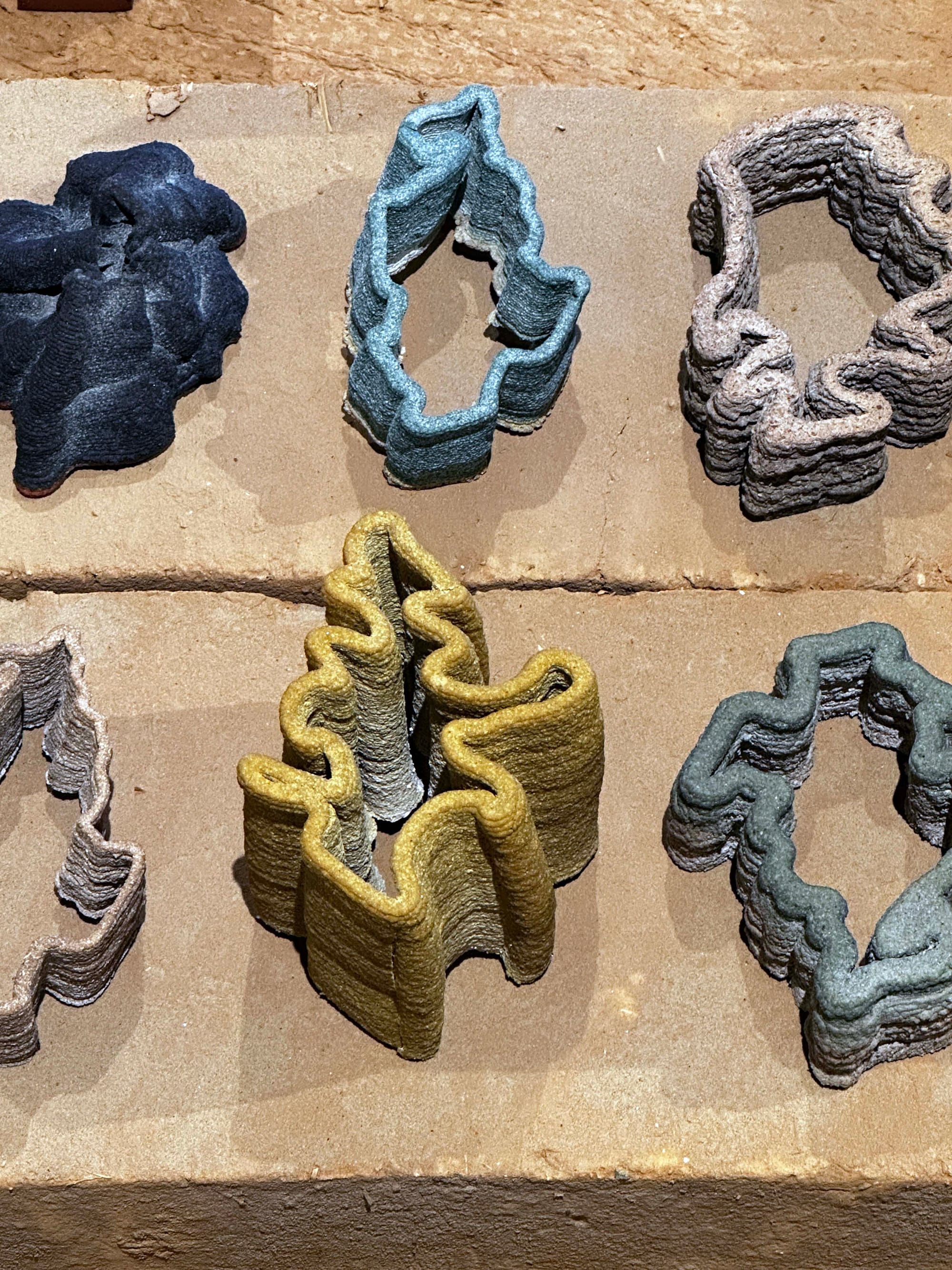
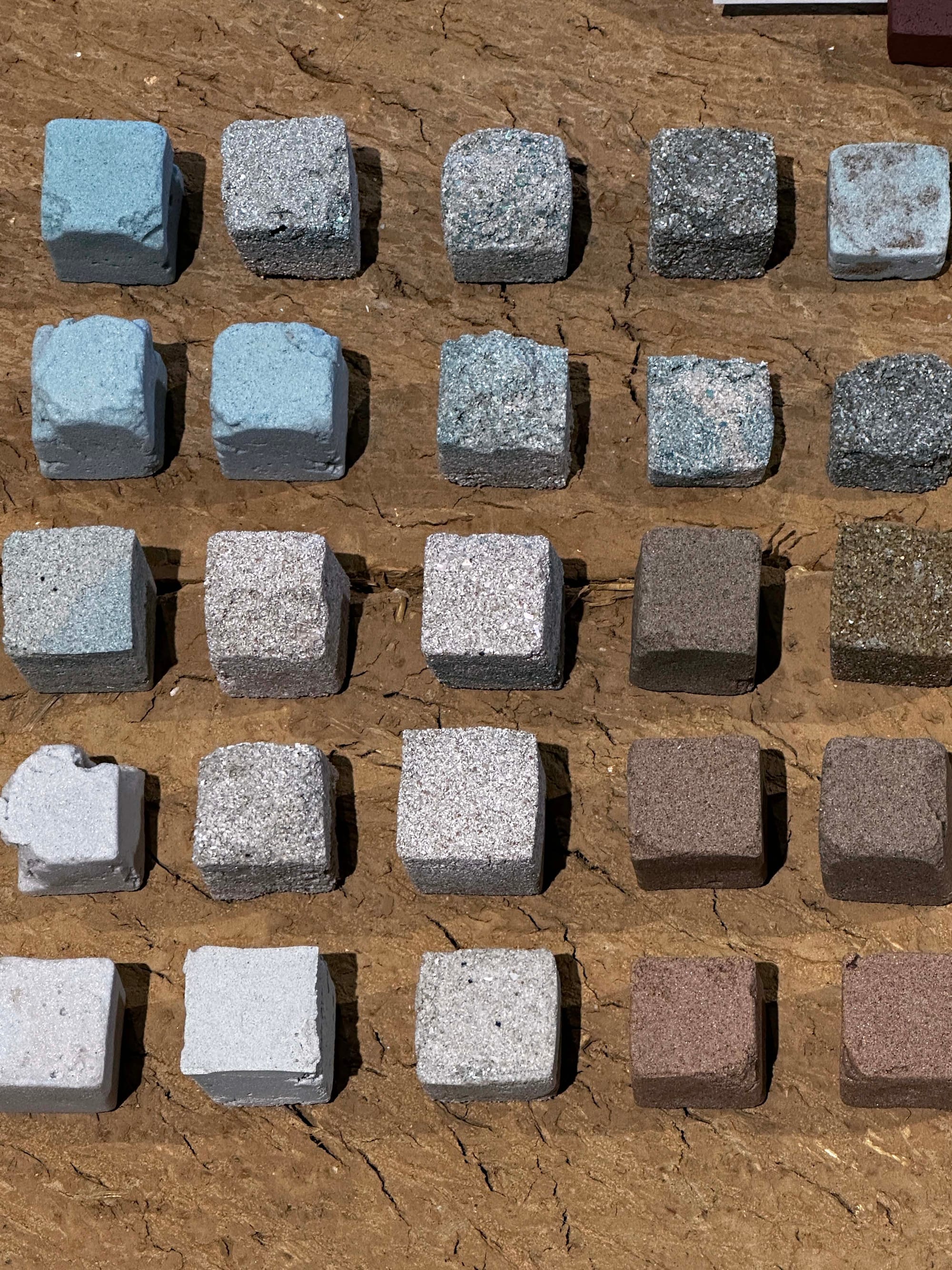
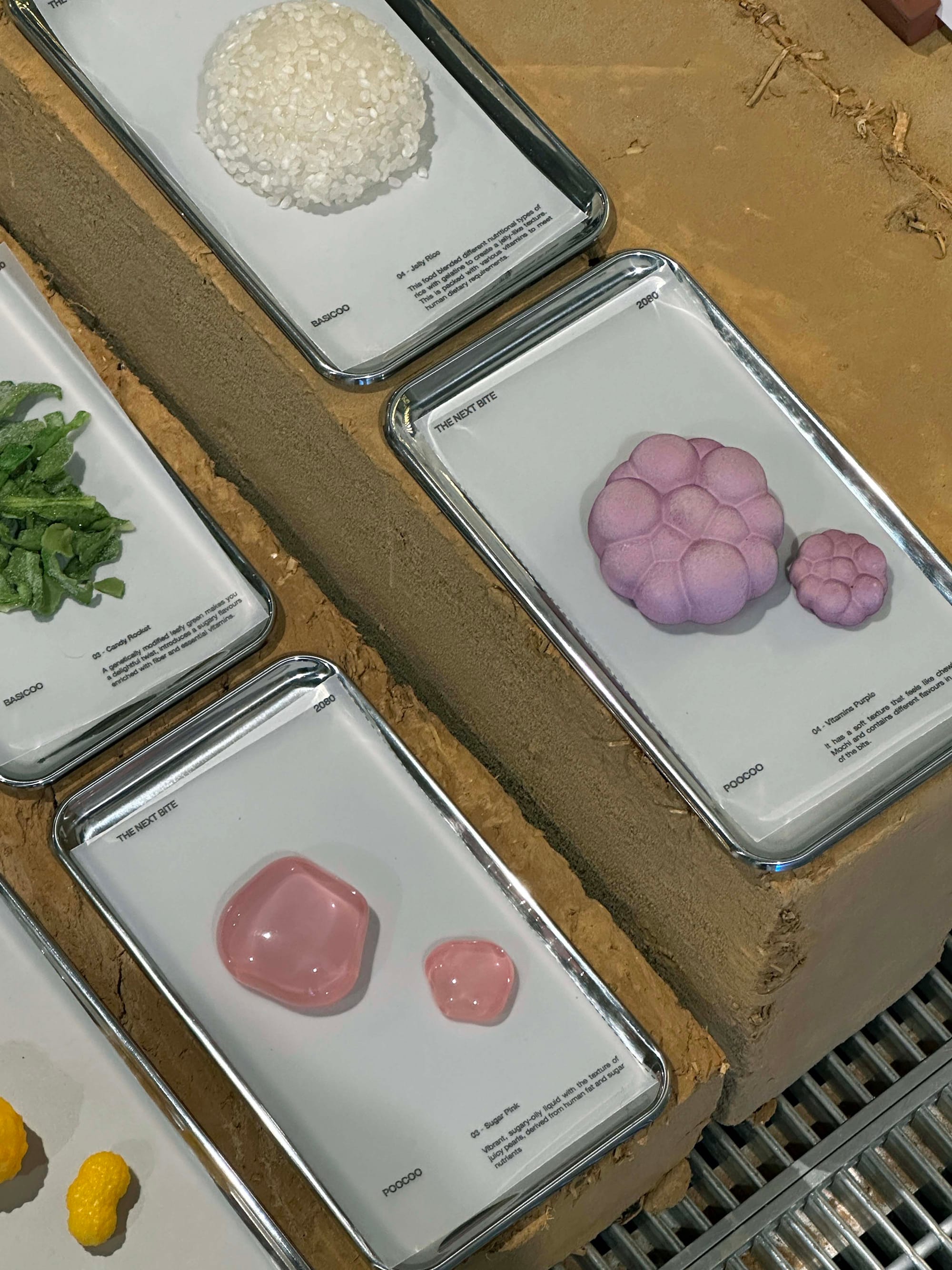
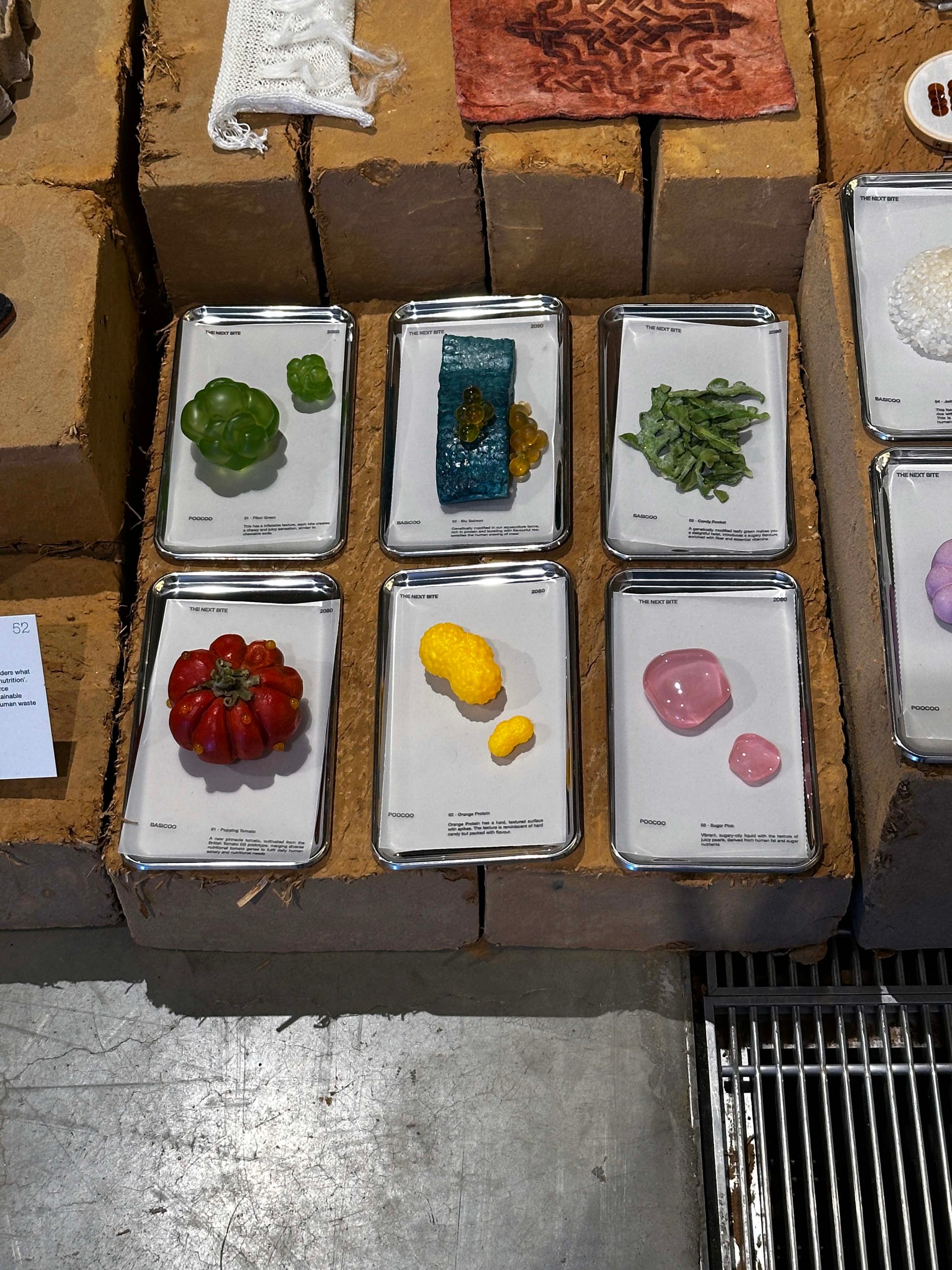
Nikoleta Dimova 'Faba-Forma' To rekindle the relationship between people and natural foods, 'Faba Forma' encourages community-building through promoting locally grown food and supporting cultivation. The interior modules are 3D-printed and plant-based, fully biodegradable and designed to be replaced seasonally, working symbiotically with the food growing cycles. Hyejo Shin 'Iridescent Breath' Drawing from 'najeonchilgi, a traditional Korean craft of inlaying mother-of-peari, Hyejo recontextualises ocean-derived food waste - oyster shells, mussel shells and egg shells - to preserve the iridescent shine of the water. Biomineralisation - the process through which living organisams create minerals -is revealed as a mechanism for carbon-neutral, circular design practices.Man Wai Chui 'The Nezt Bite' A speculative look at the future of food, 'The Next Bite' considers what might happen if the genetic modification of food leads to 'over-nutrition'. Photos: Fiona Coleman. Text: Soil, Toil & Table
Dining
Lest we forget, what we eat is linked to the plant that was grown to produce it, the animal that was kept to feed us and the hands that harvested them. Our eating choices are powerful tools in the ever-turning wheel of food production and land guardianship. How will you next decide over your plate?
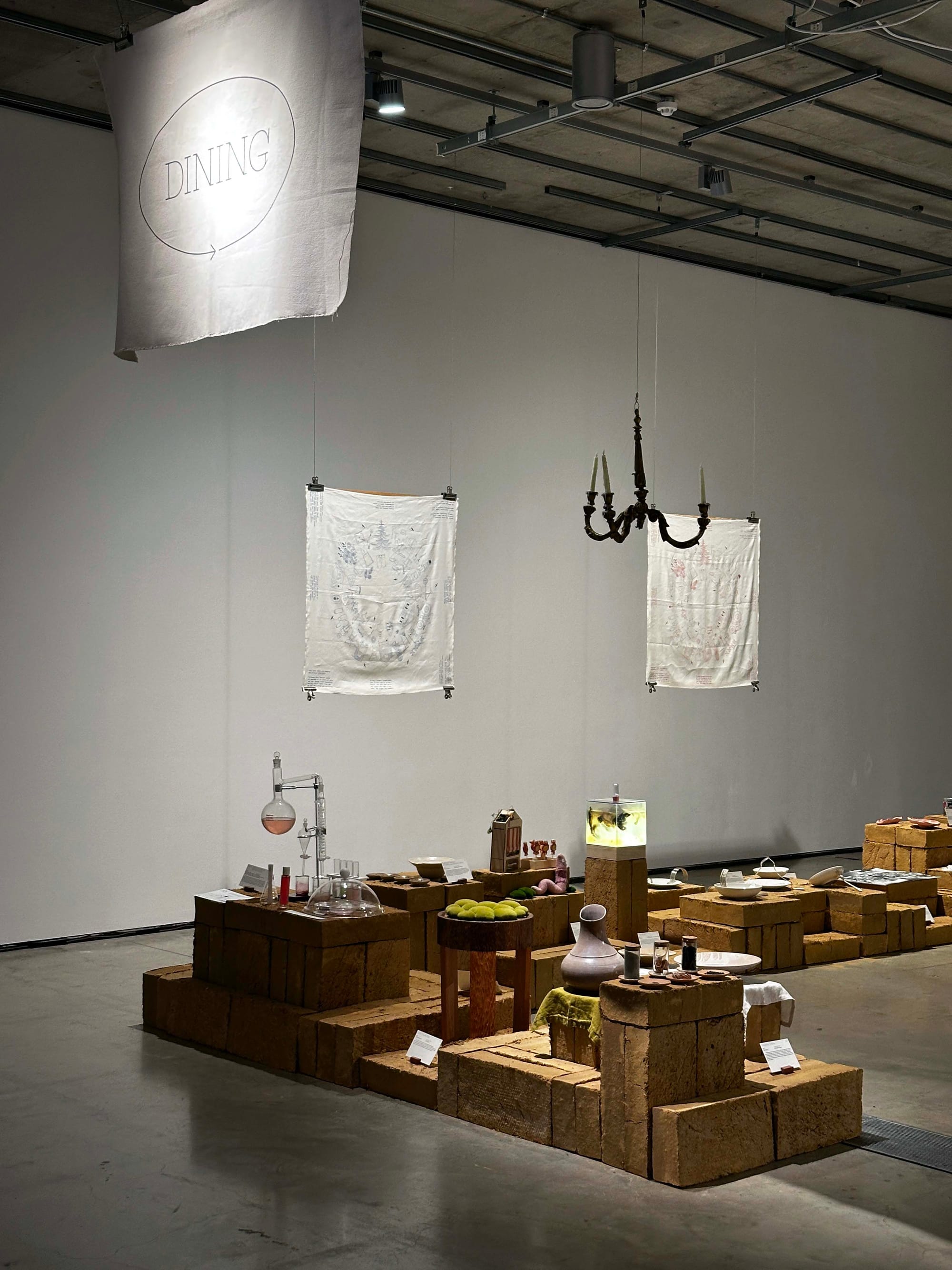
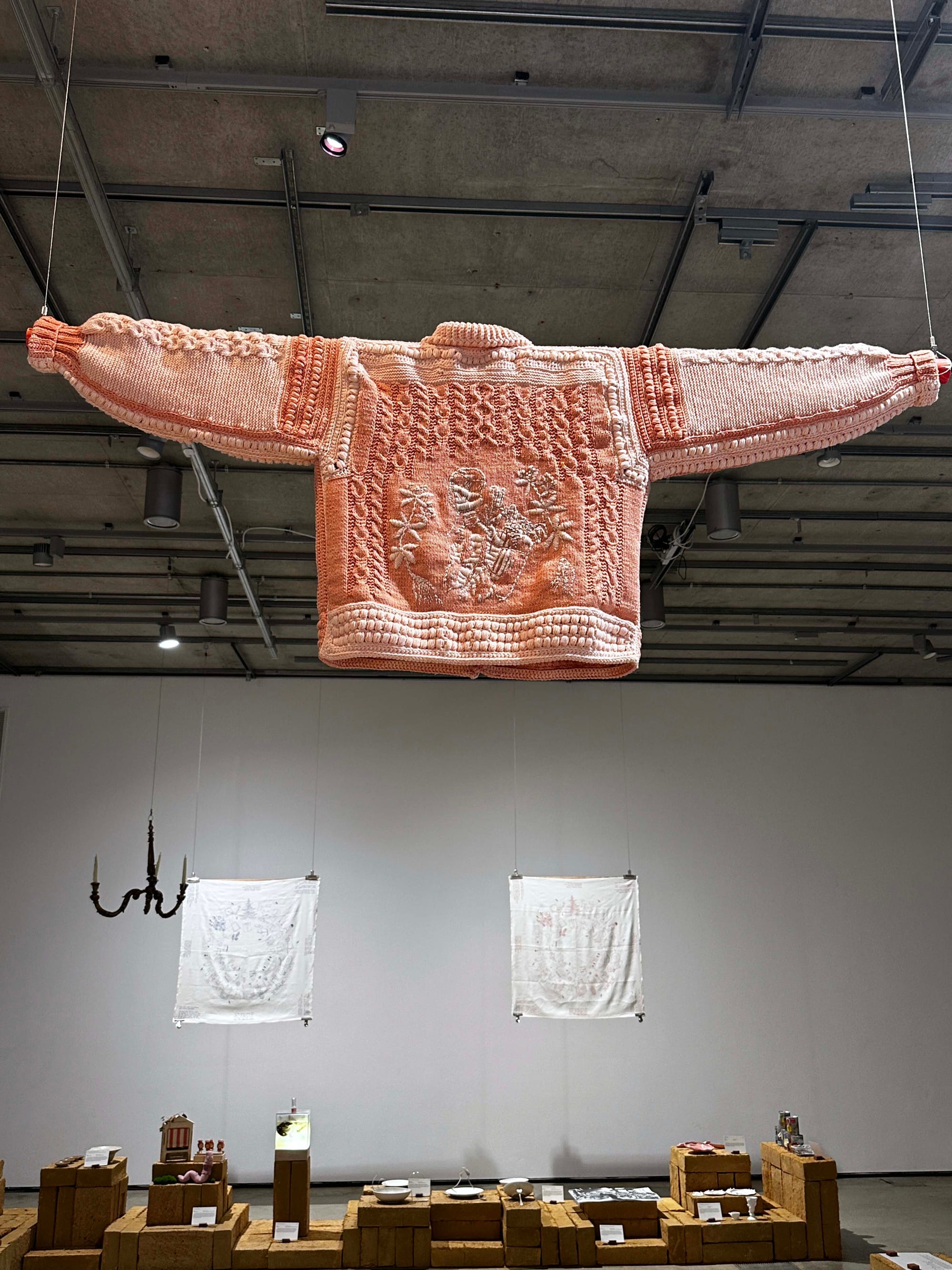
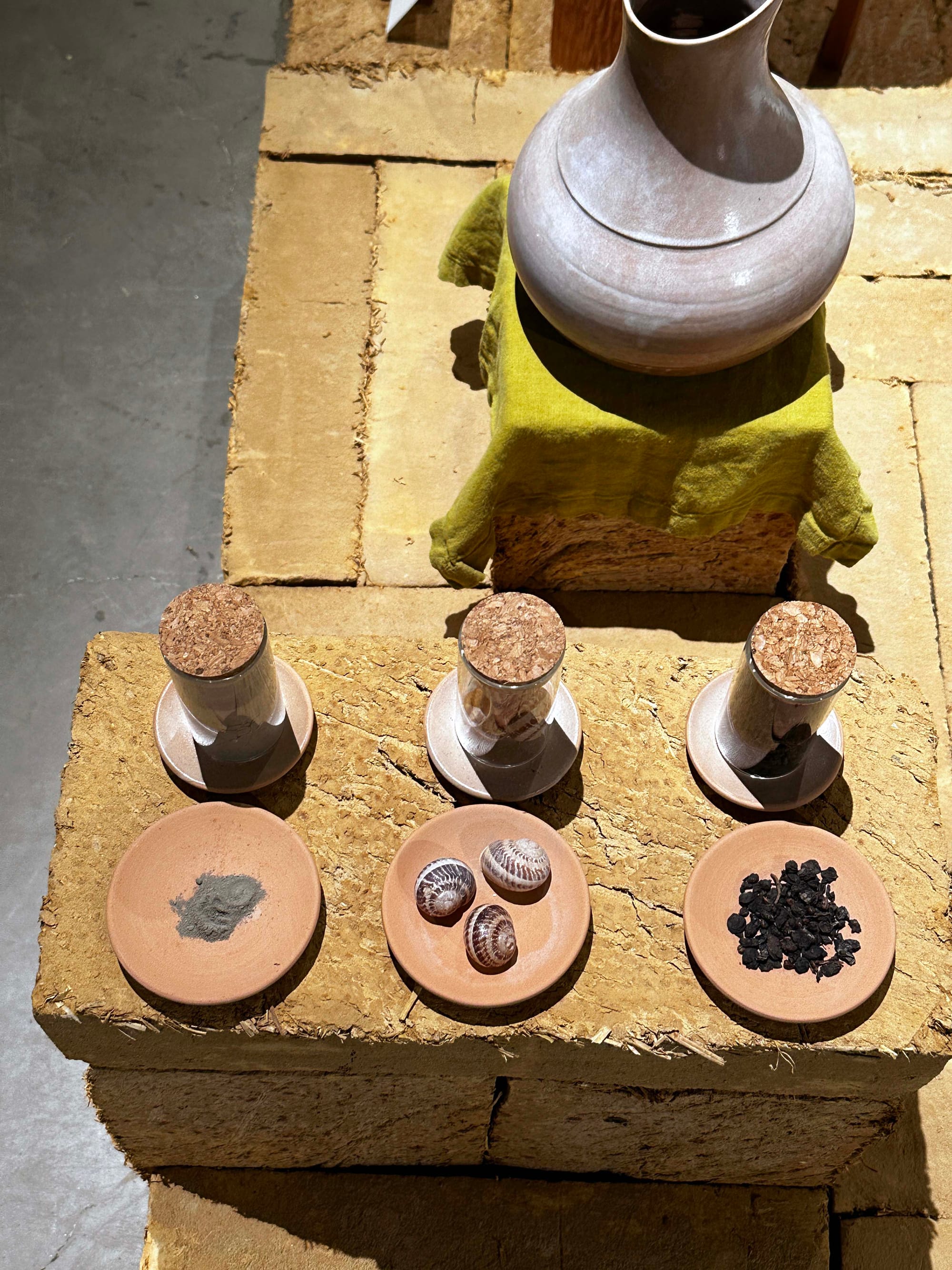
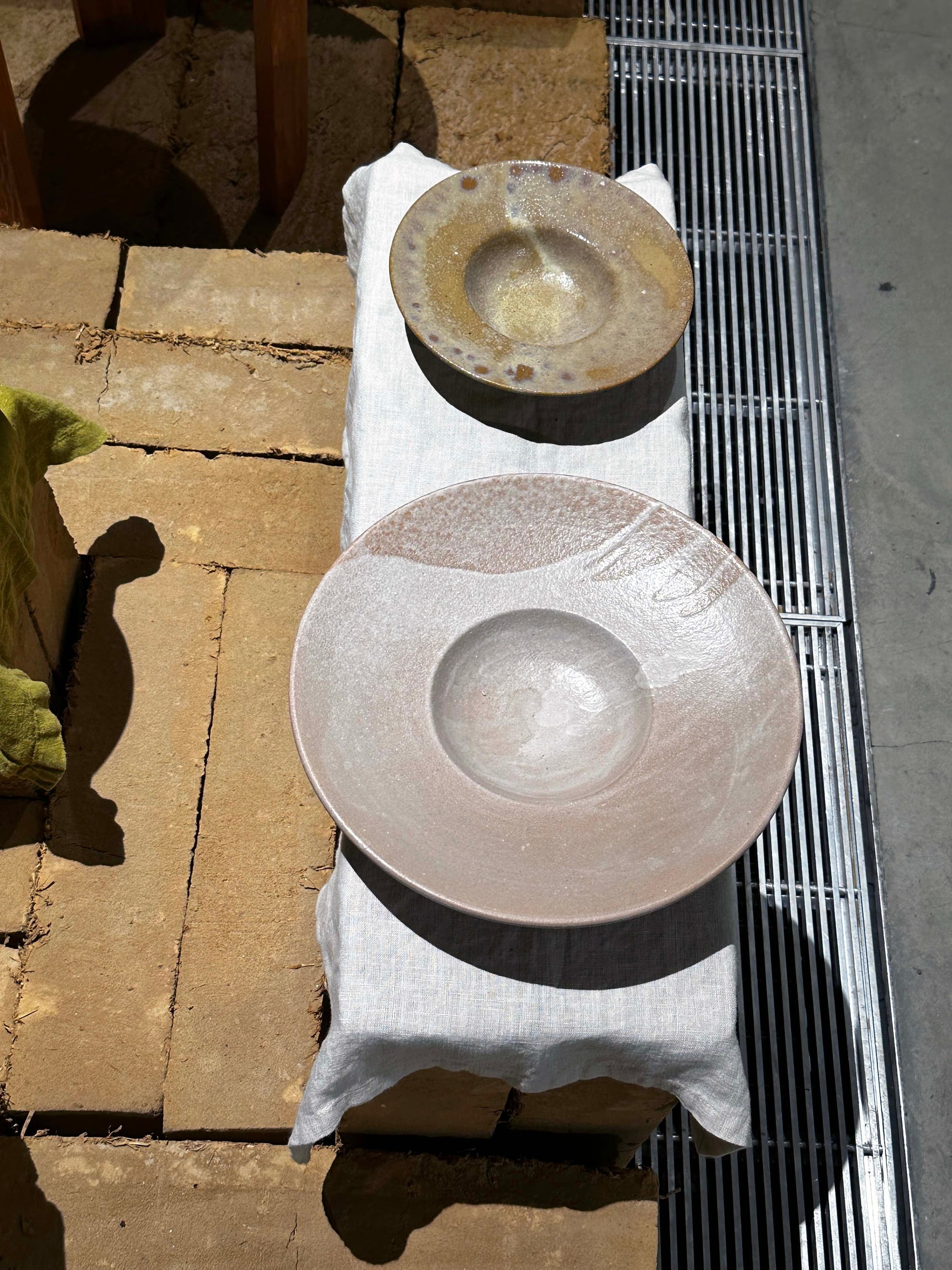
Carly Breame 'Ceramica Umbra' Reflecting Umbria's natural landscape, Carly uses materials like quarry clays, vineyard grape skins and snail shells to create glazes that connect the dining table with the local environment. By forging this relationship, Carly invites diners to reflect on the landscape's impact on everyday items, fostering conversations about material culture, sustainability and the ethics of food systems. Photos by Fiona Coleman. Text: Soil, Toil & Table
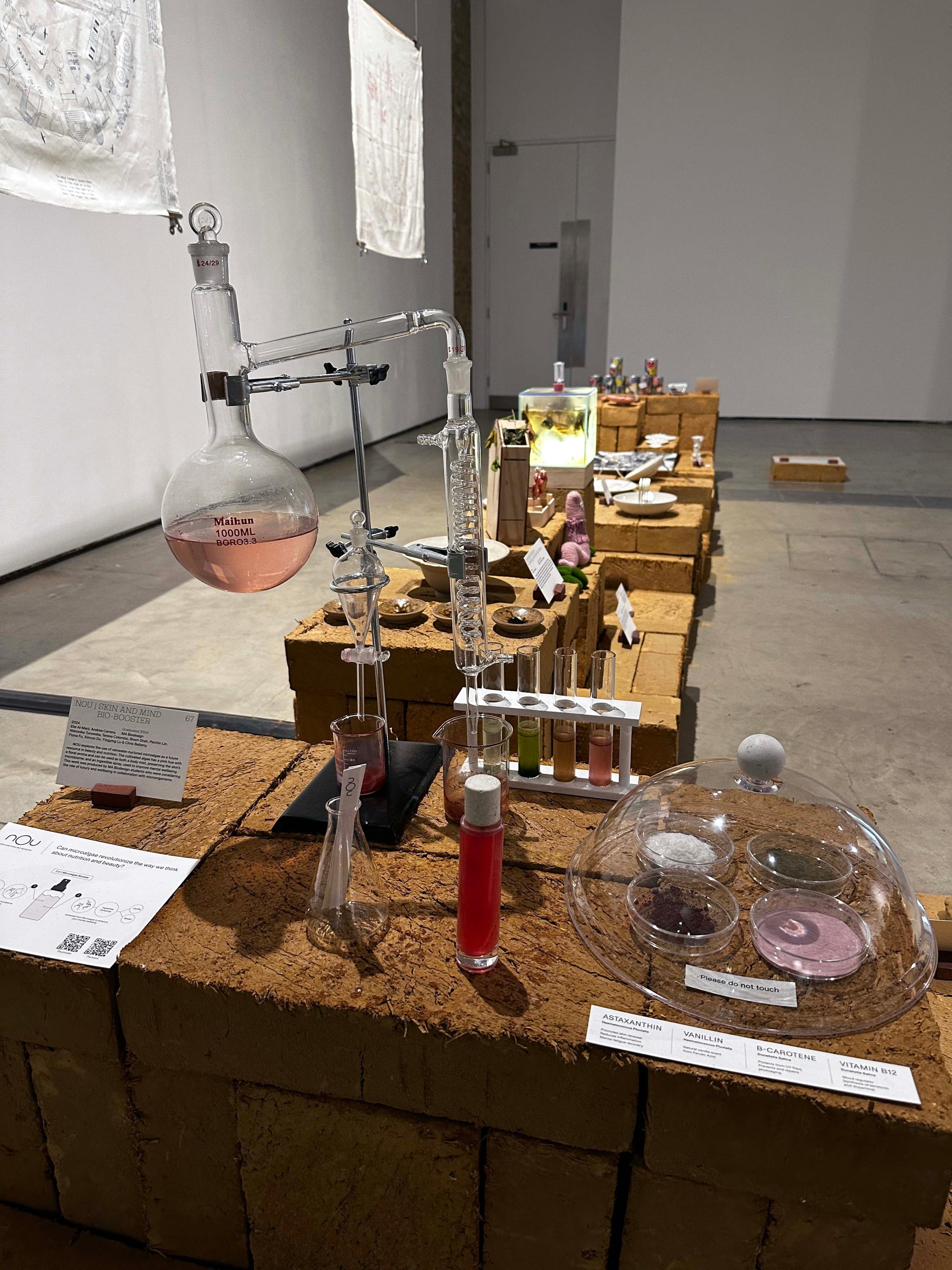
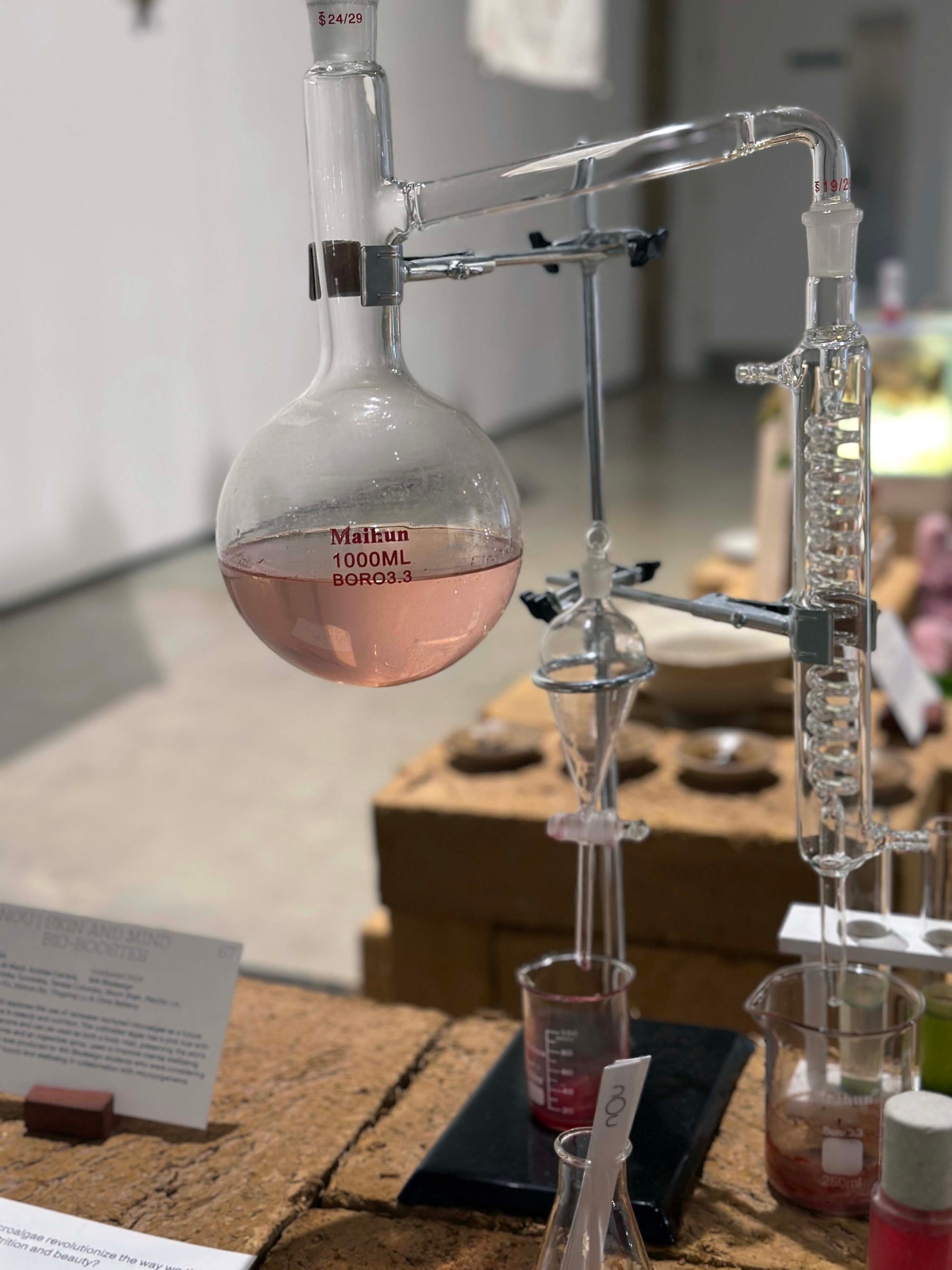
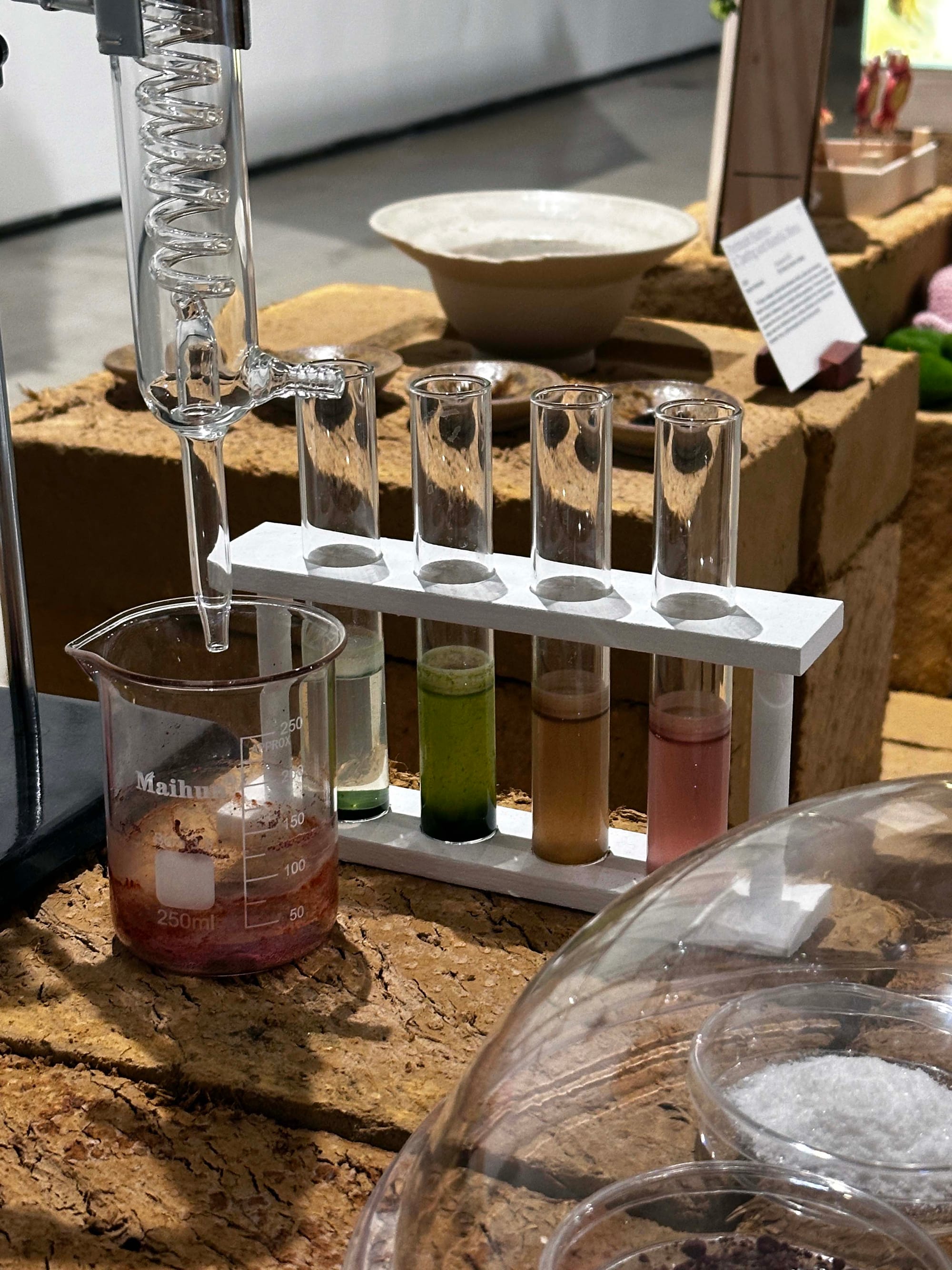
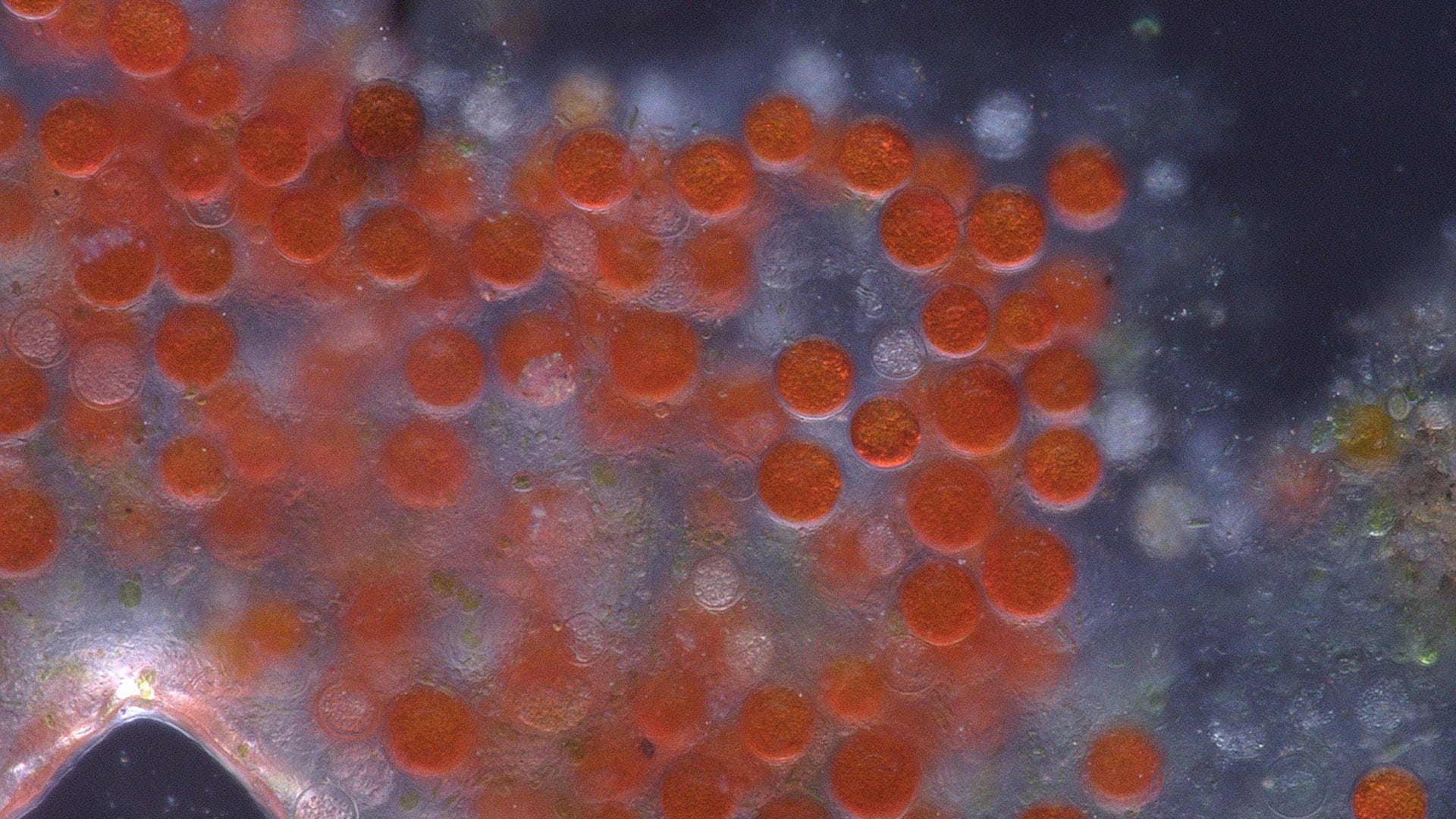
Elie Al-Marji, Andrea Carrera, Weronika Turowska, Teresa Colombo, Shom Shah, Peichin Lin, Fiona Fu, Xinnuo Du, Yingying Lu & Chris Bellamy 'NOU Skin and Mind Bio-Booster' NOU explores the use of rainwater-nurtured microalgae as a future resource in beauty and nutrition. The cultivated algae has a pink hue with a floral aroma and can be used as both a body mist, preserving the skin's microbiome; and an ingestible spray, used to improve mental wellbeing. Photos: Fiona Coleman and NOU. Text: Soil, Toil & Table

